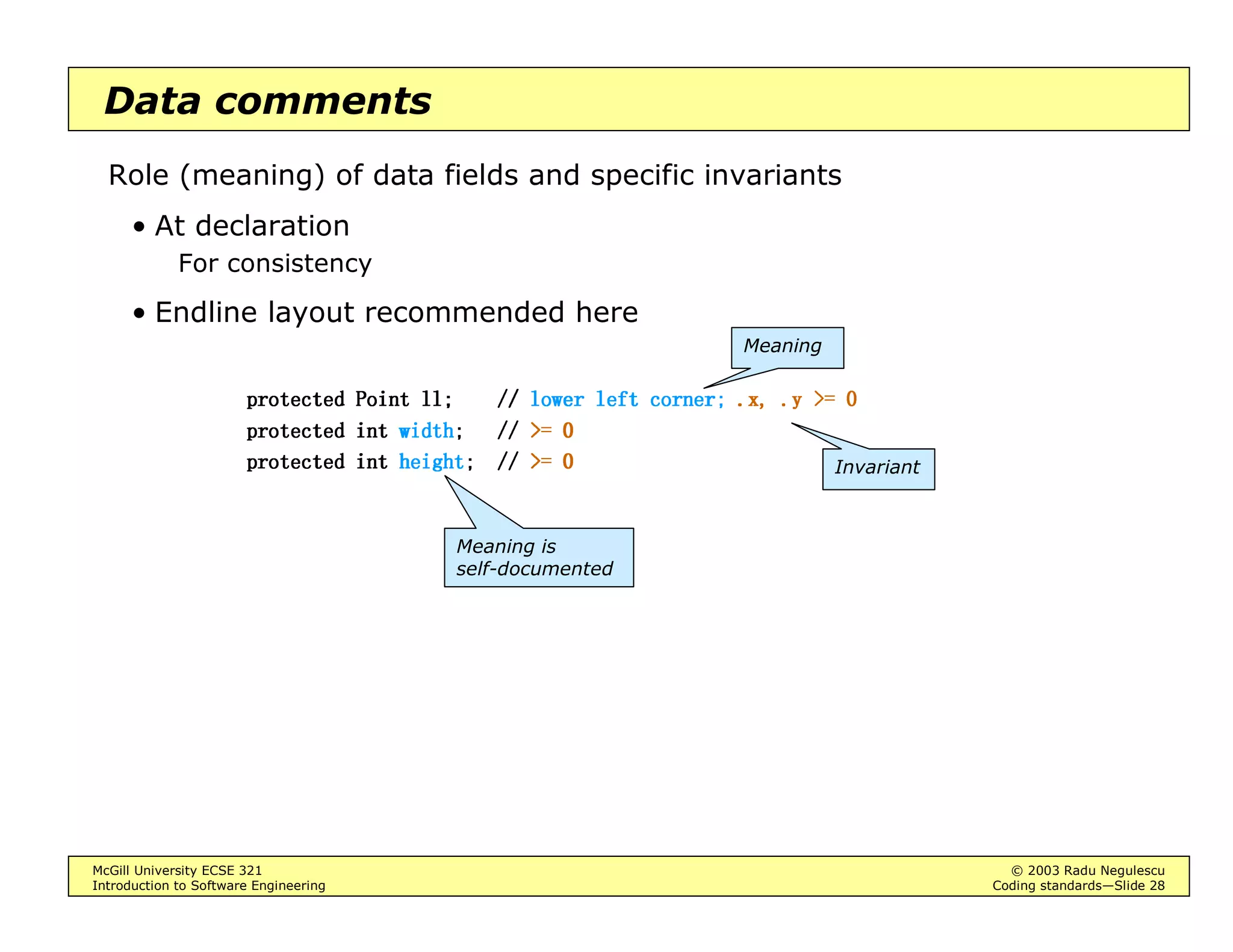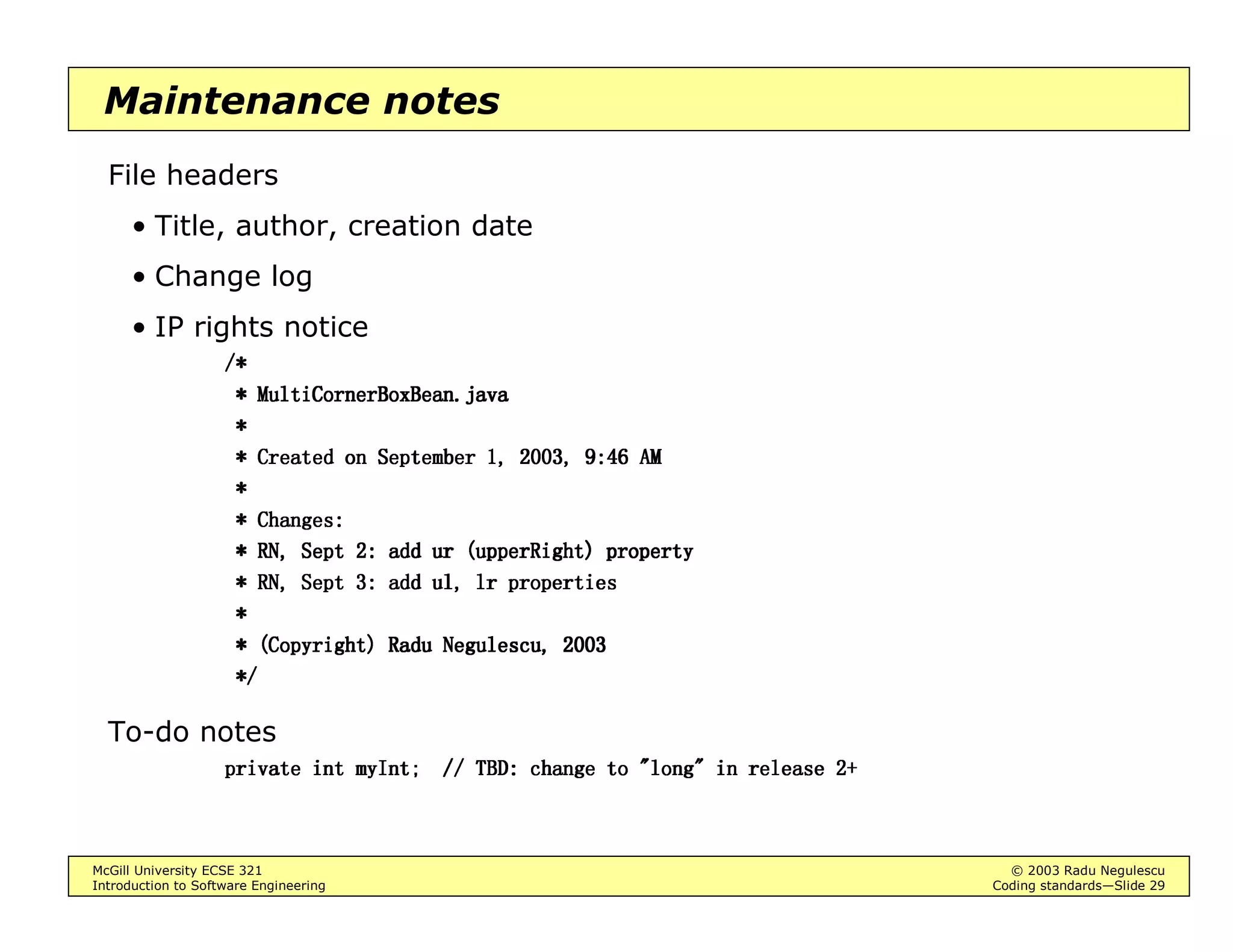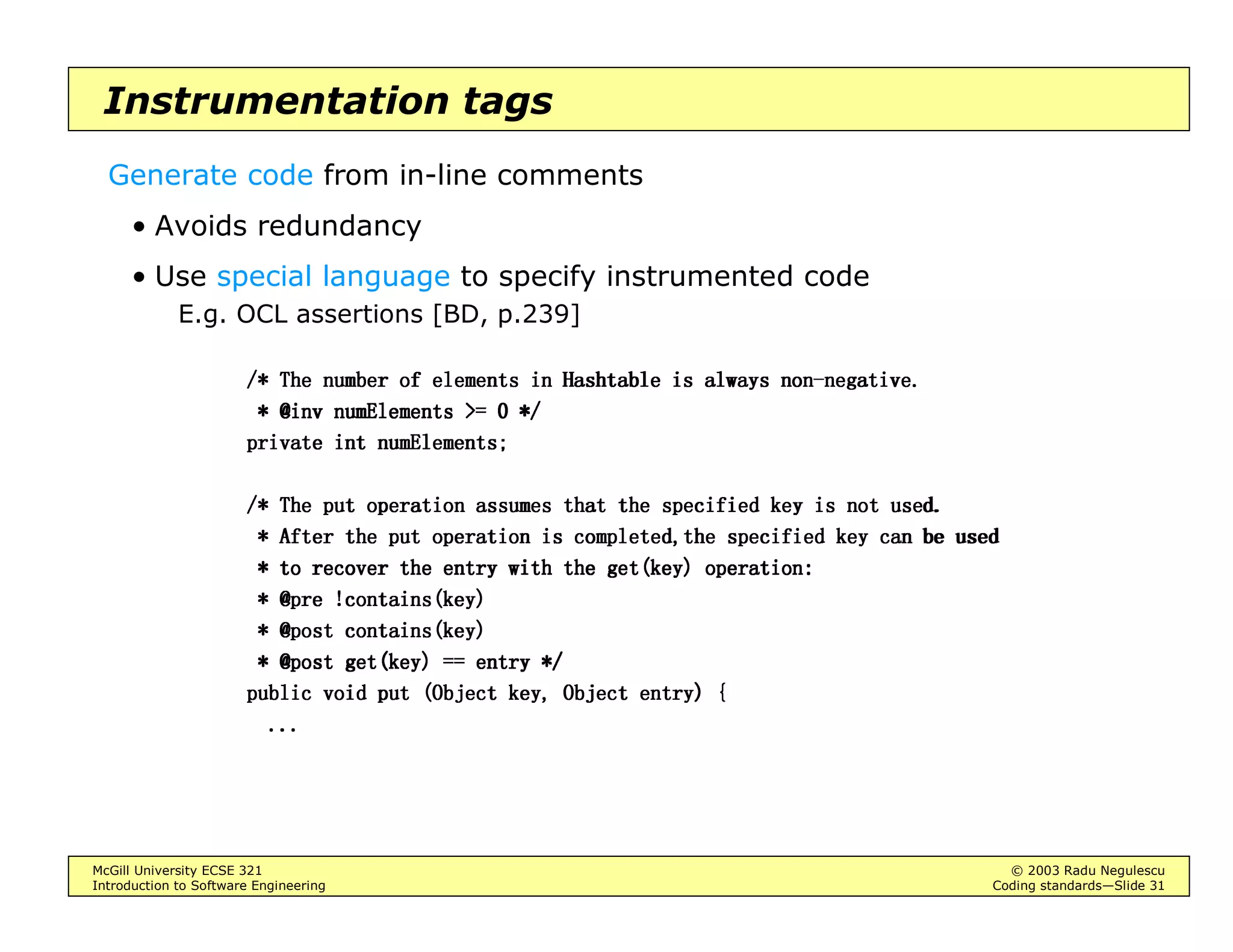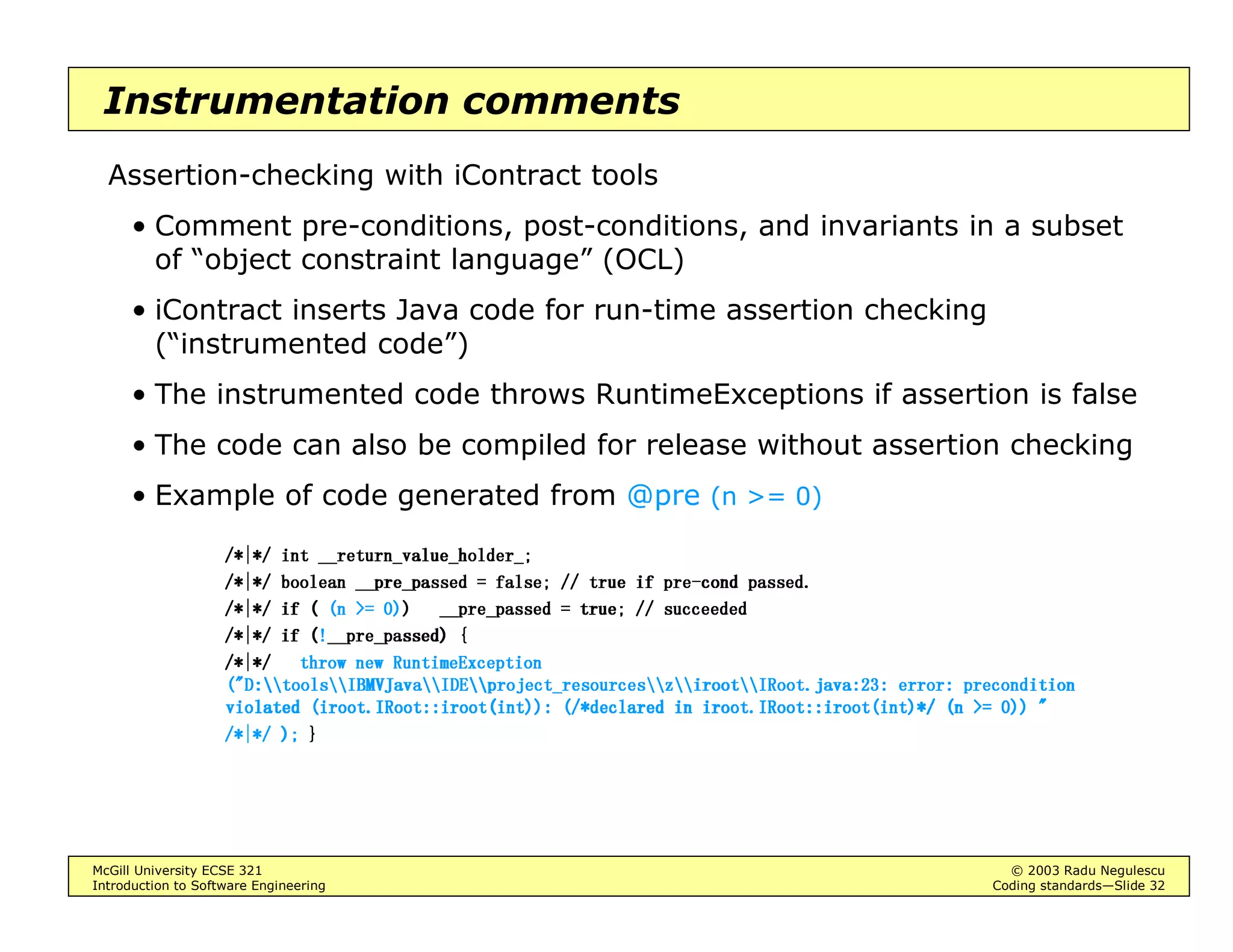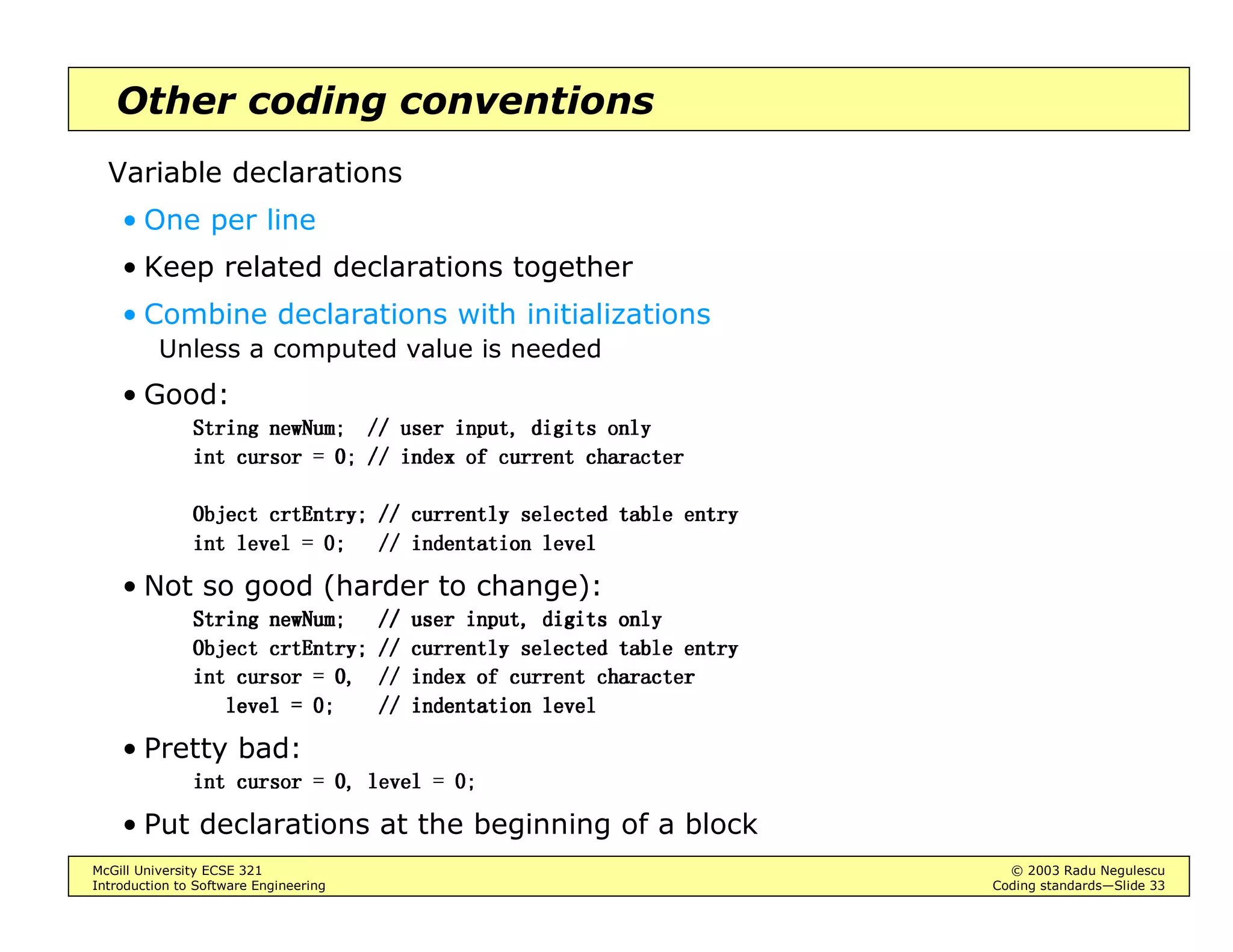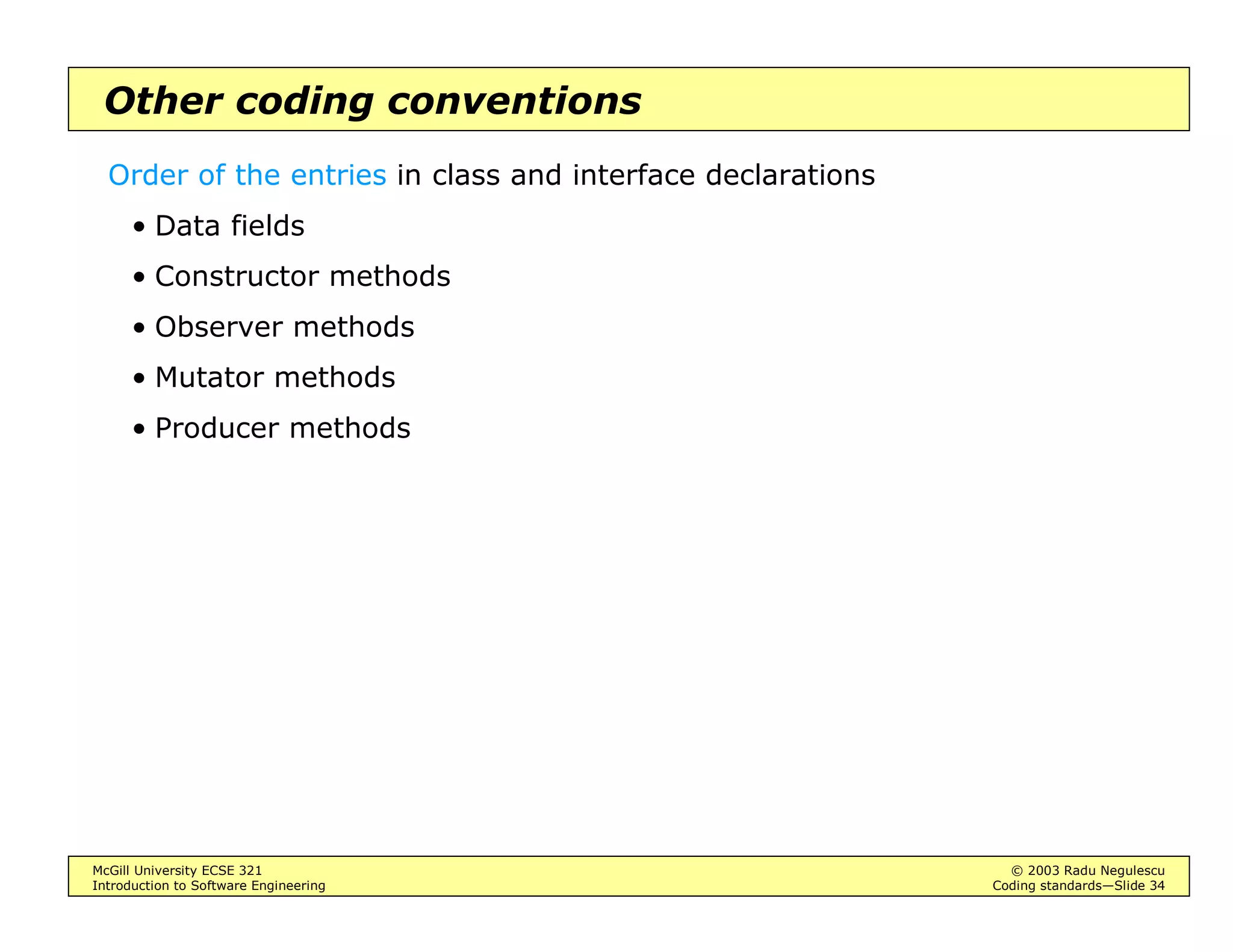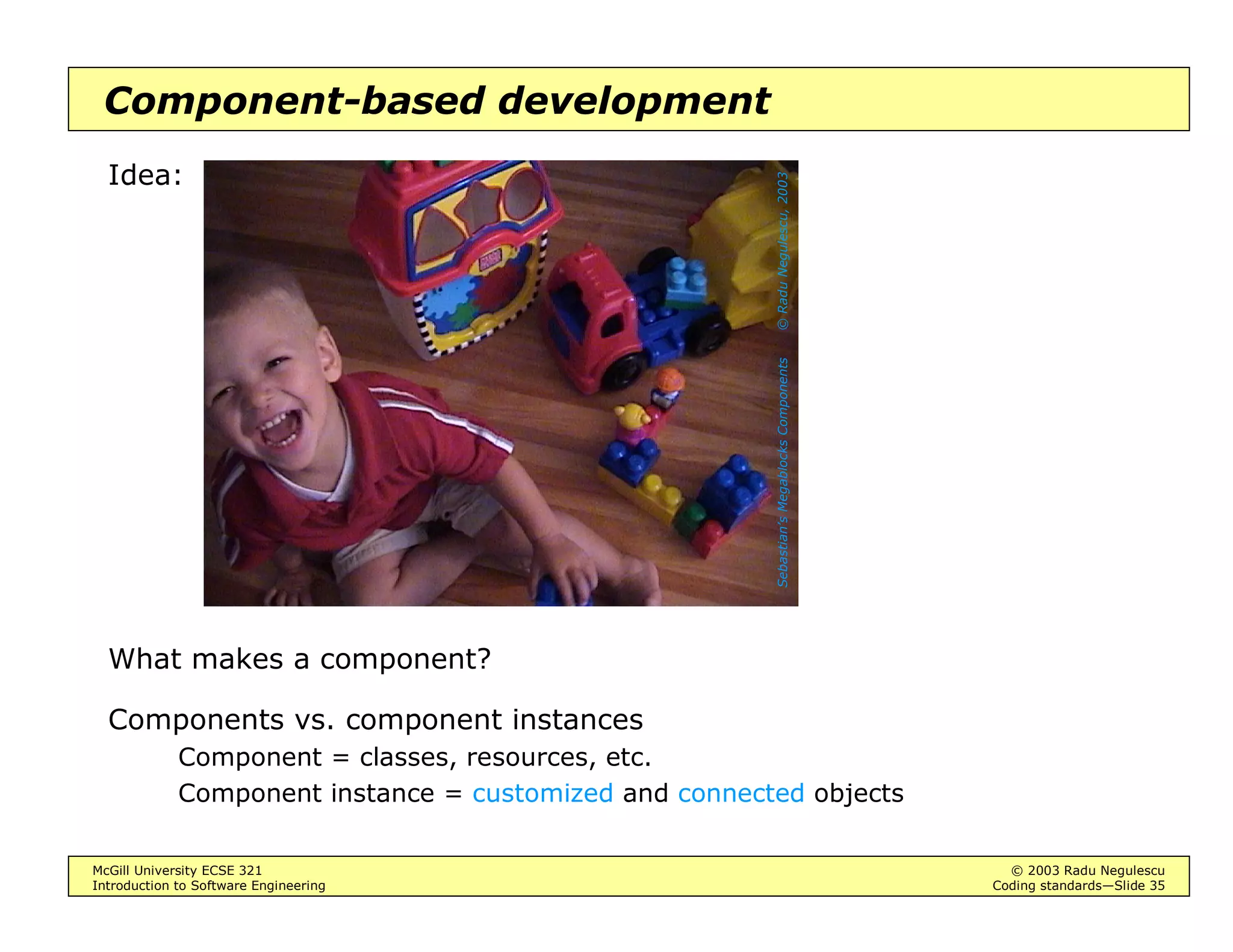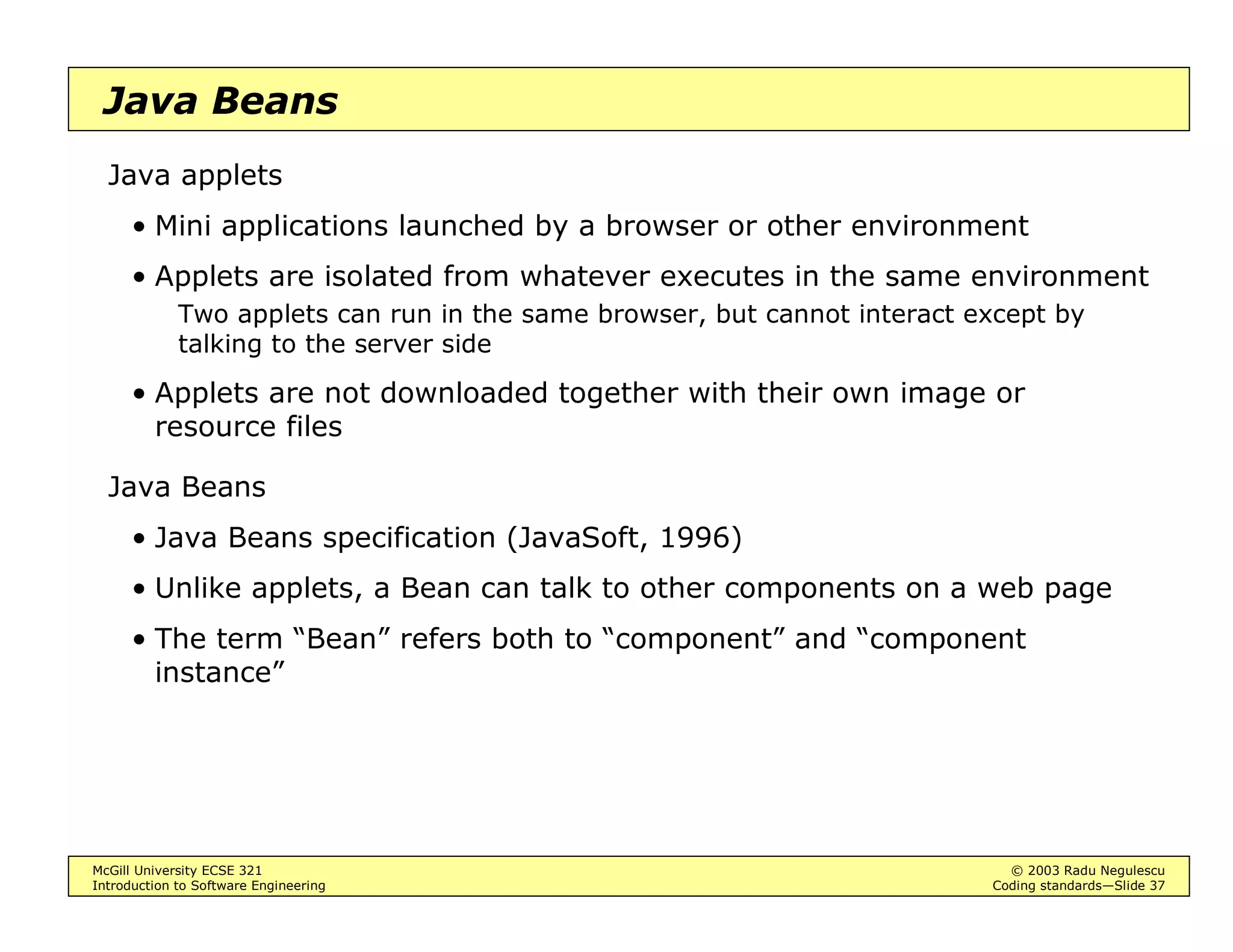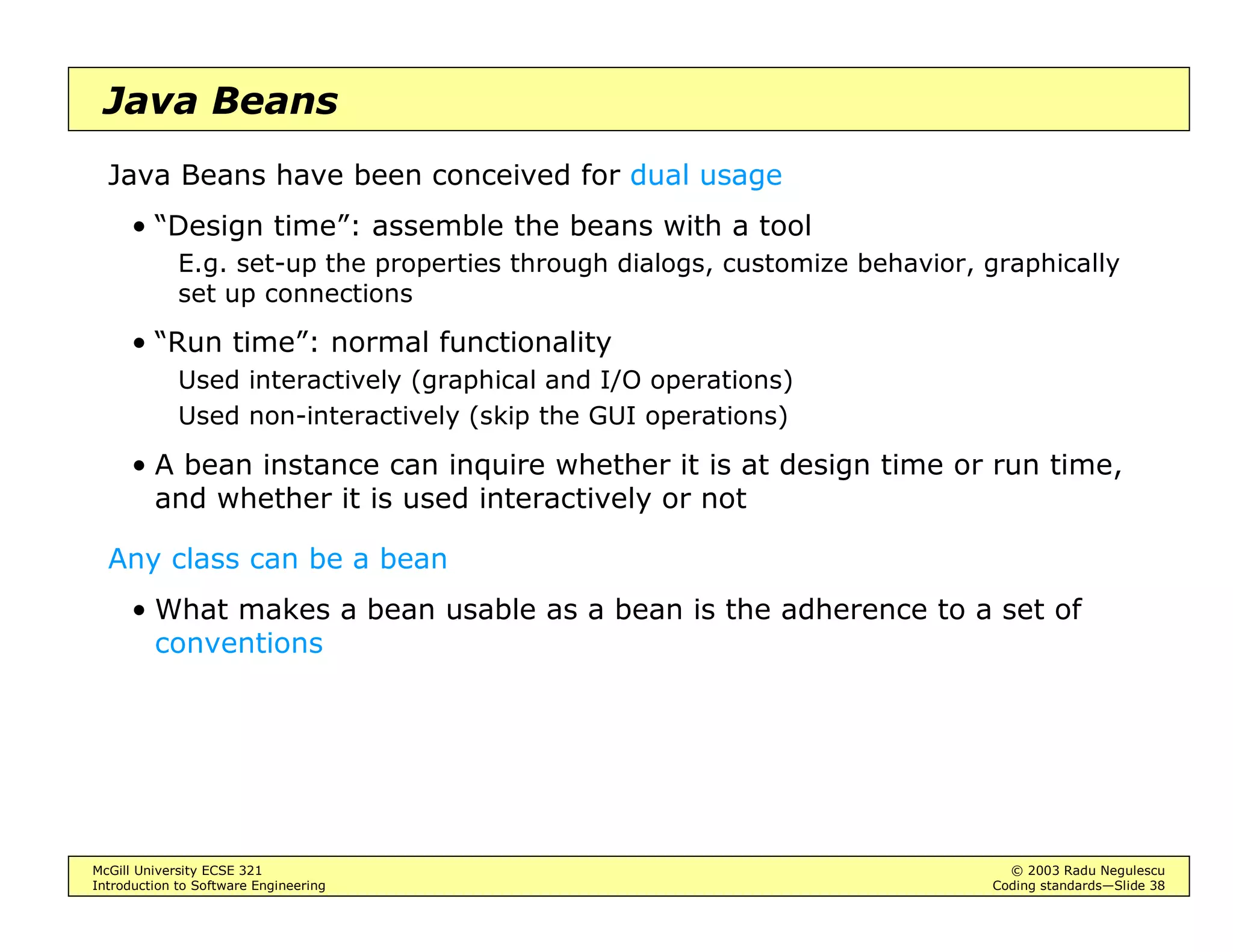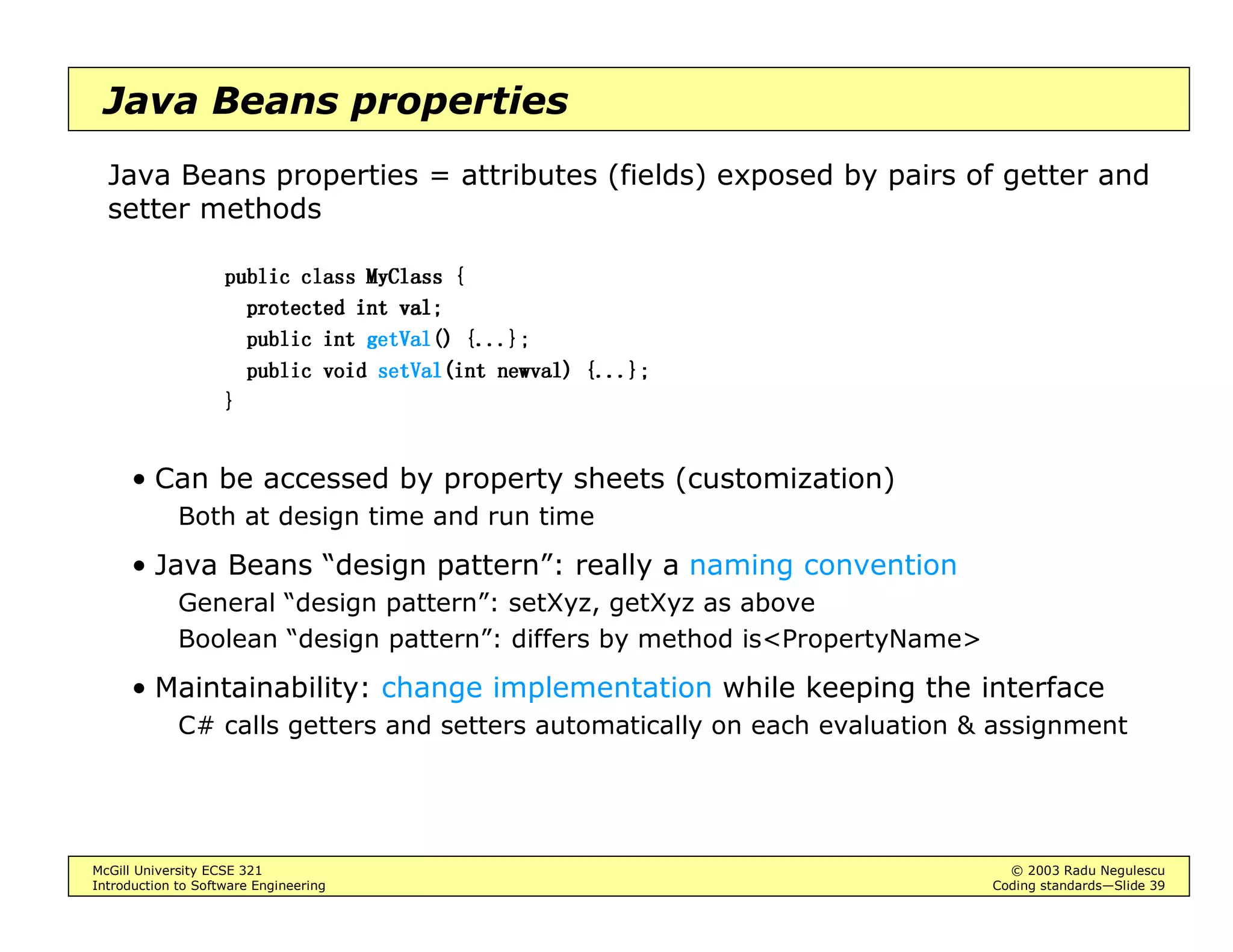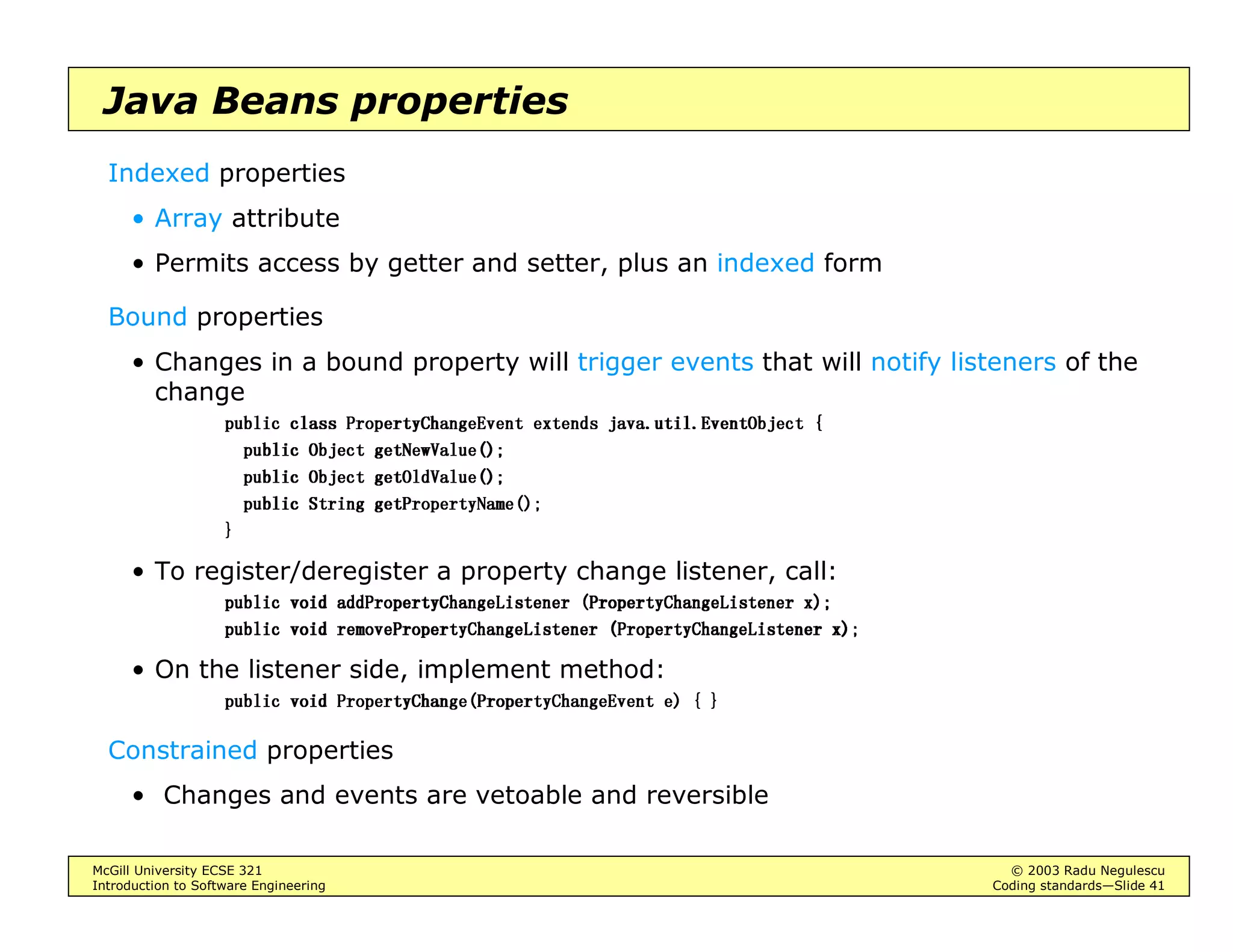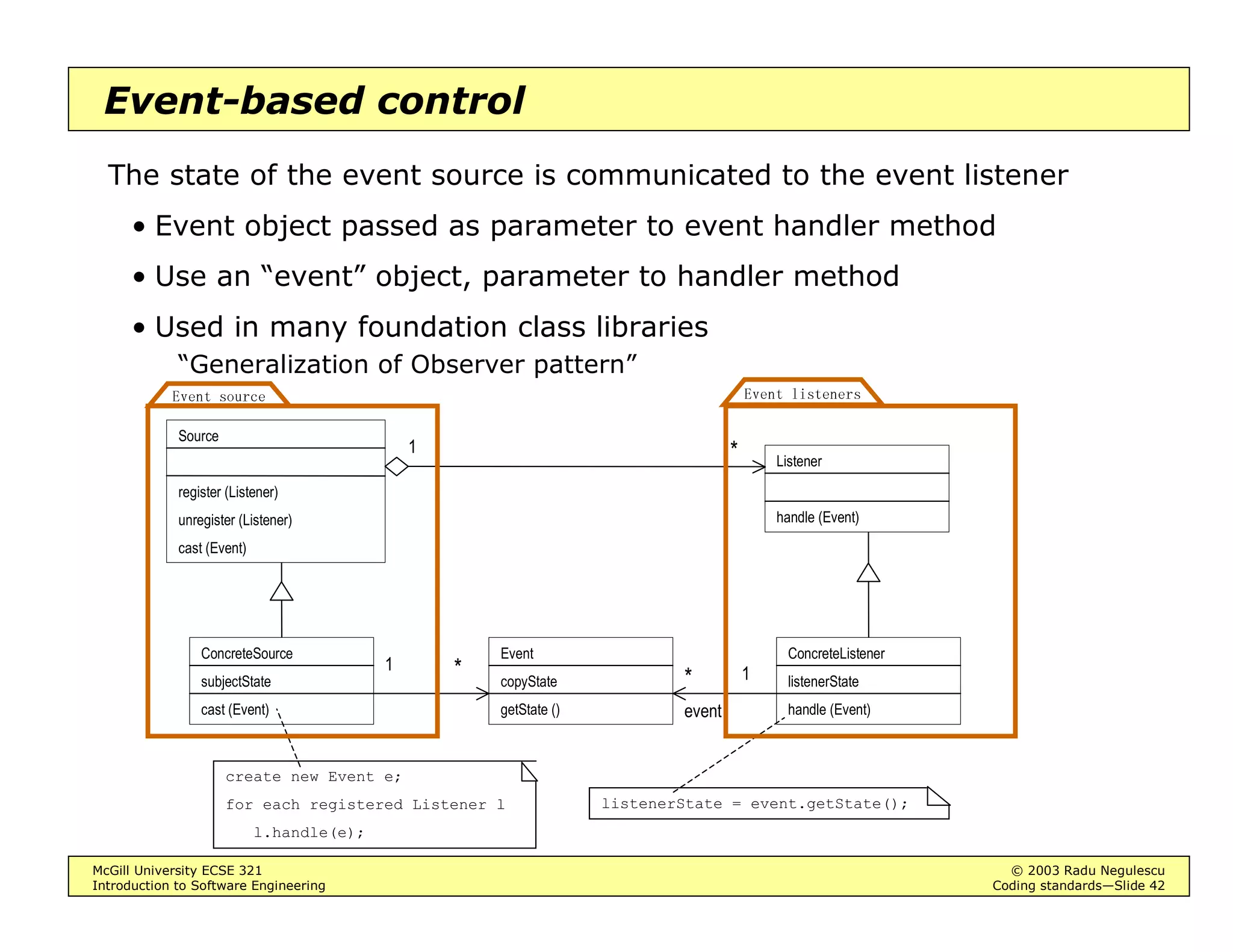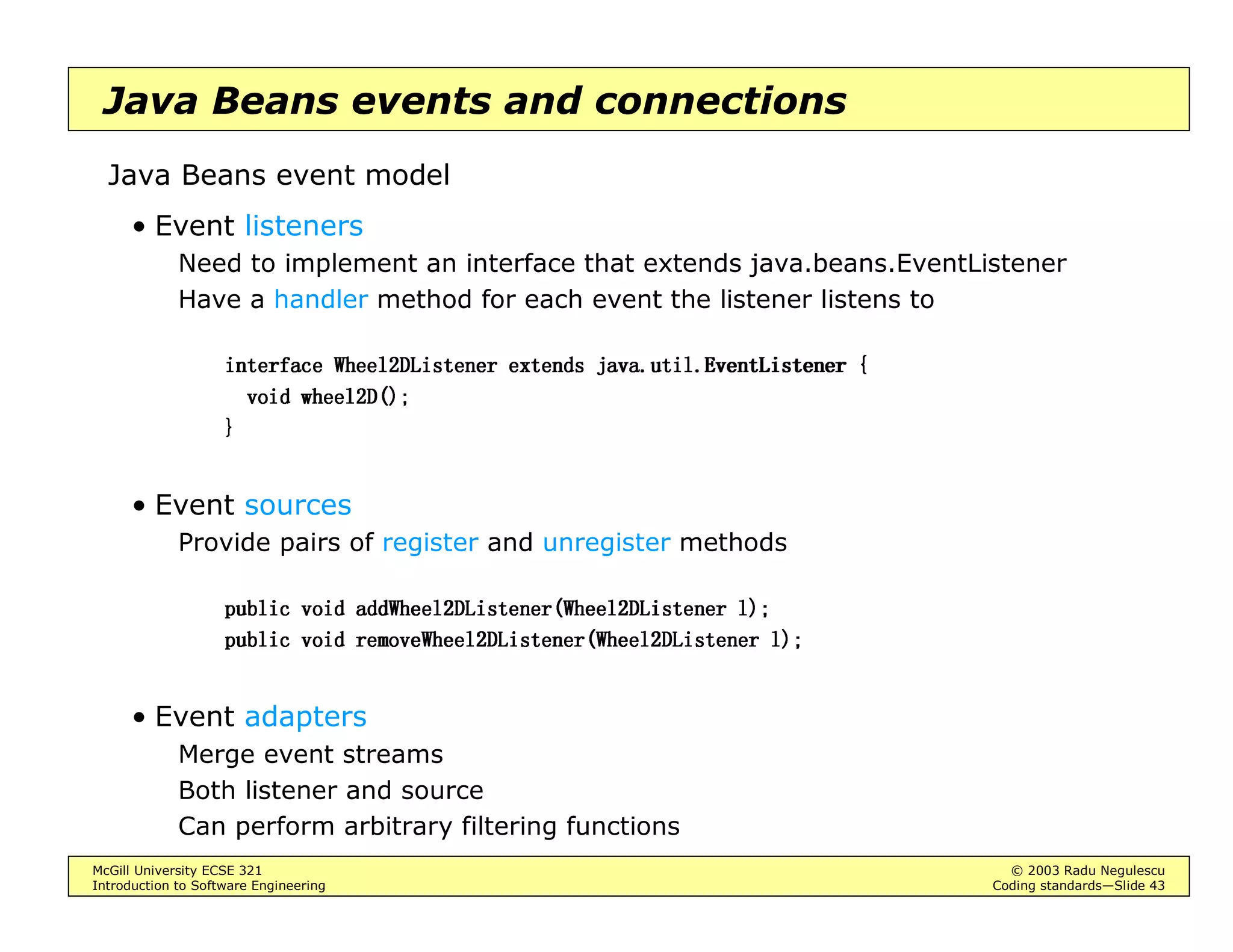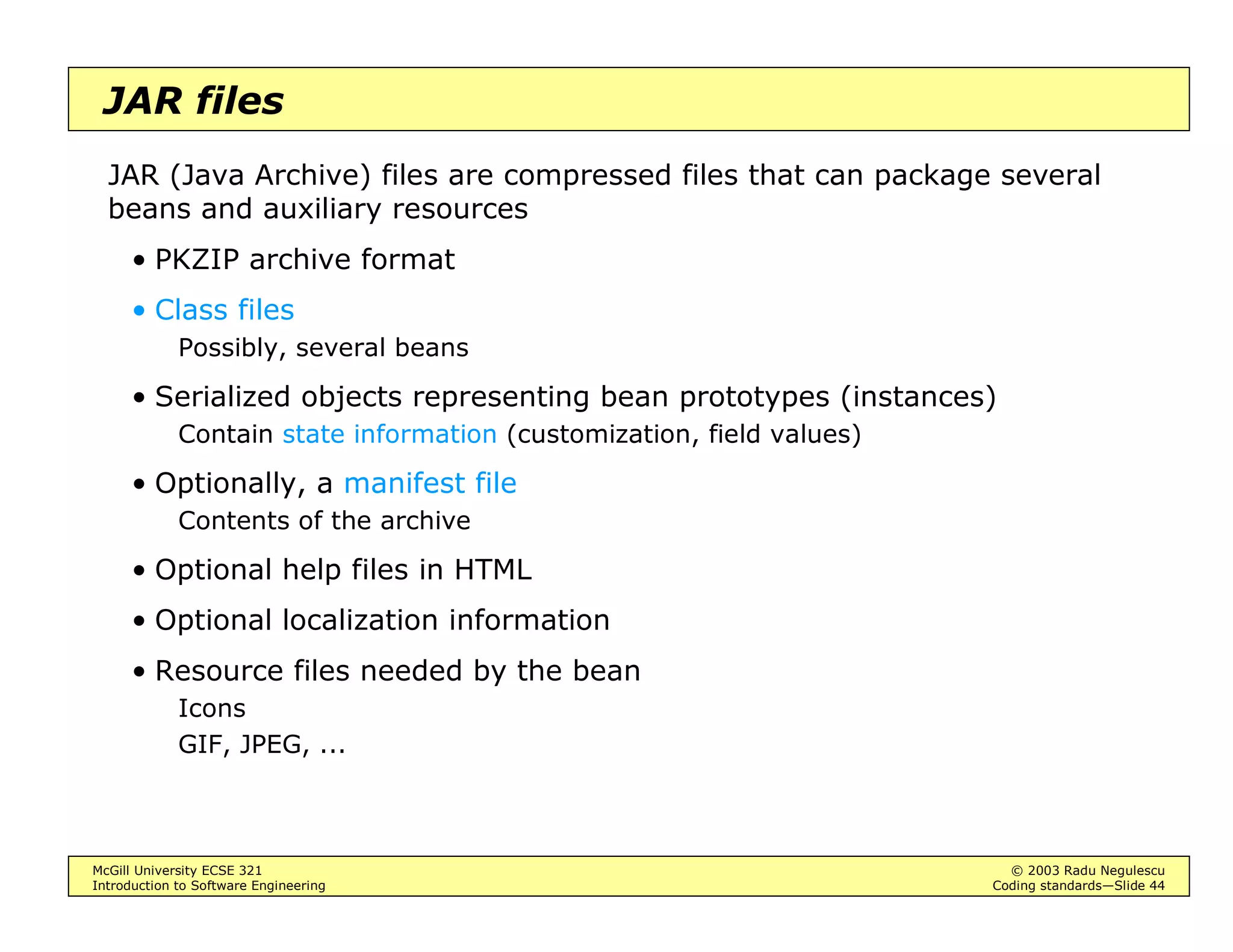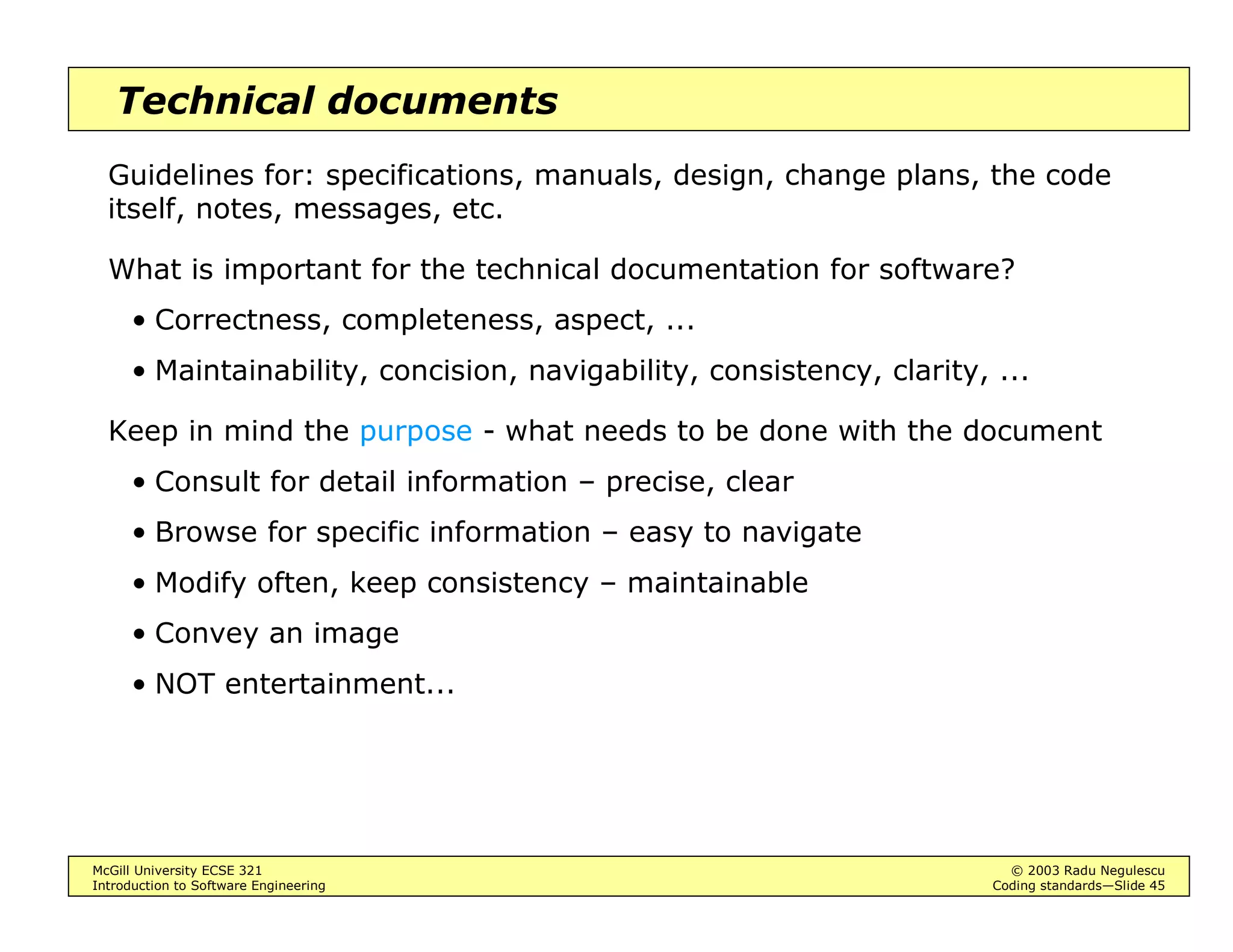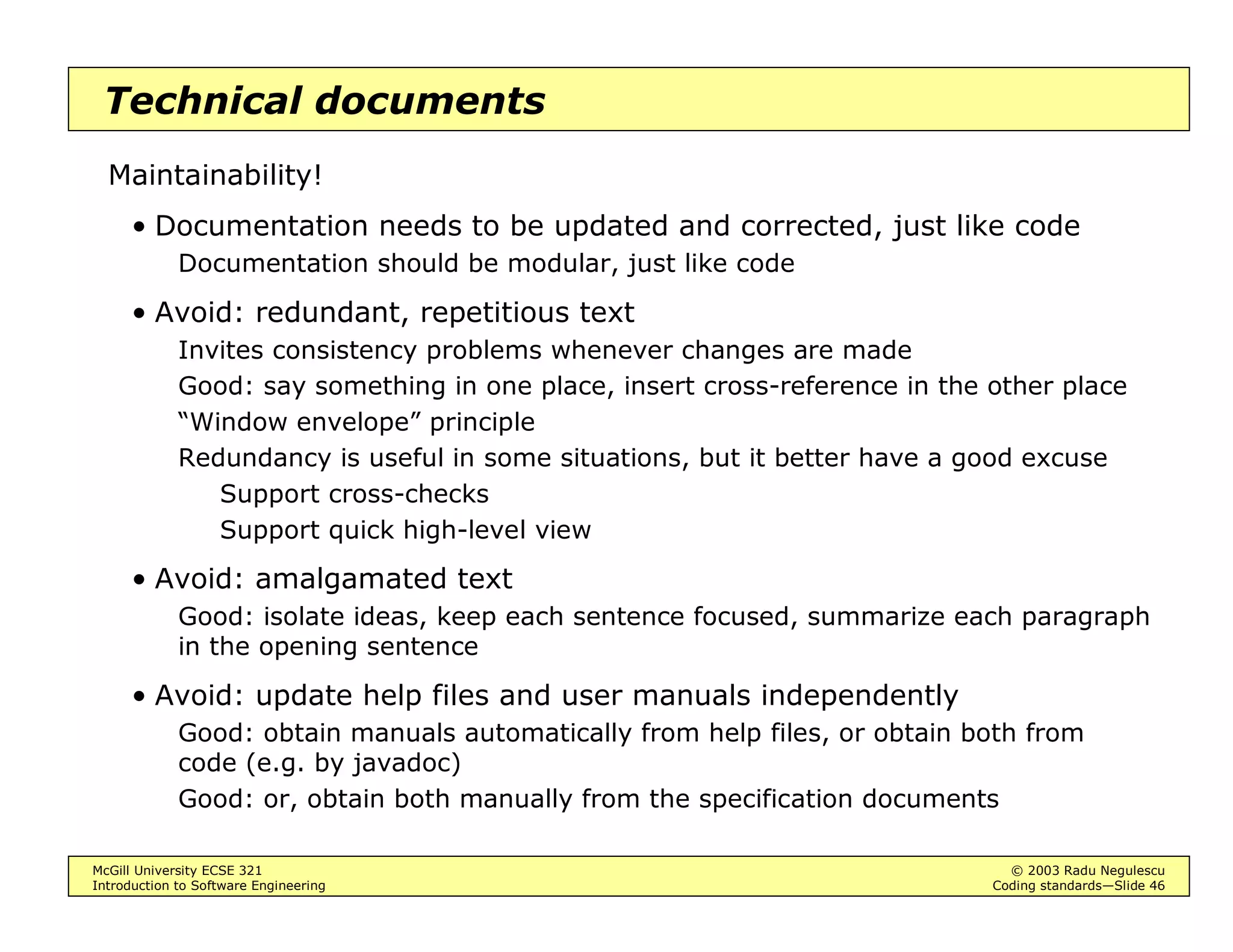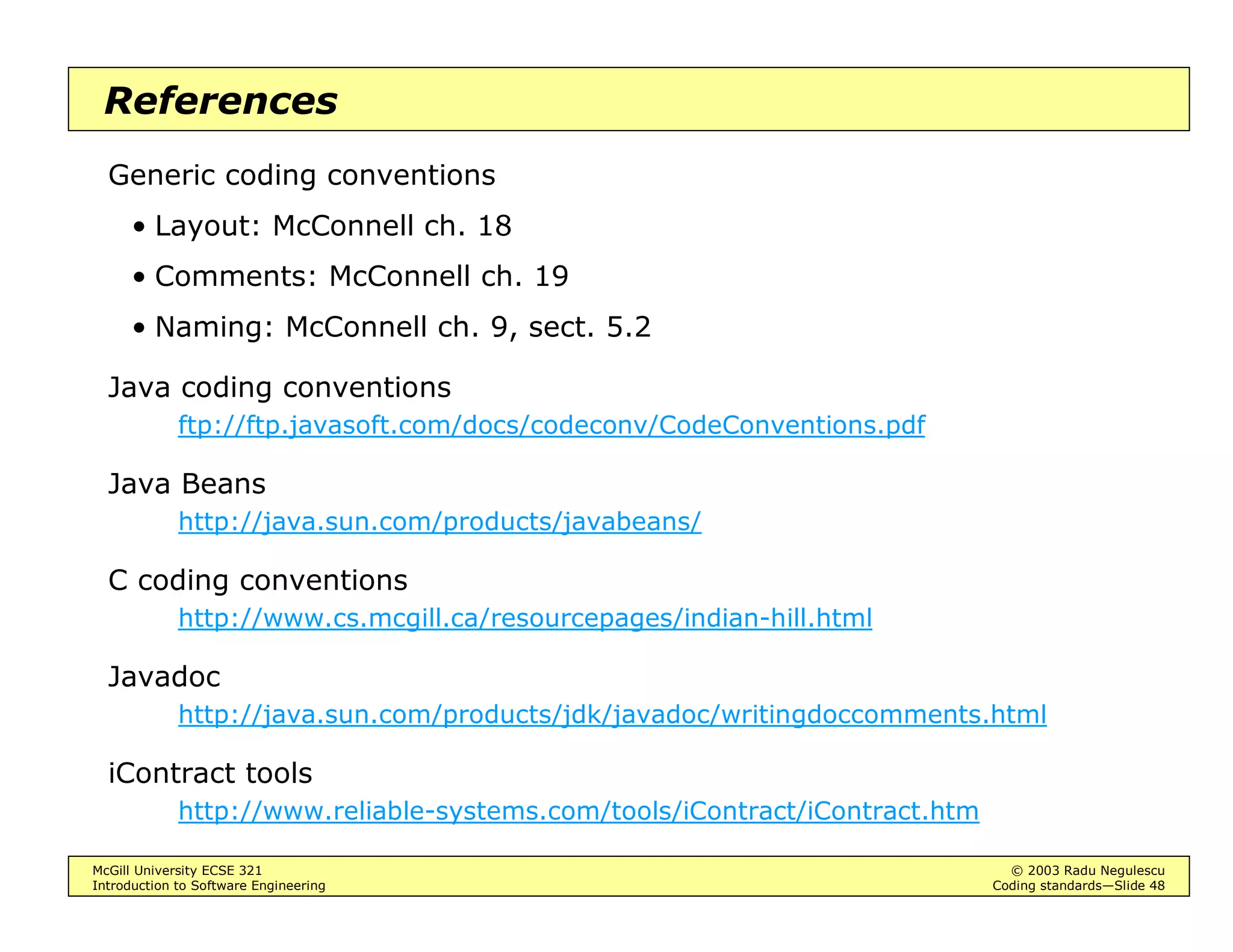The document discusses coding standards and conventions. It emphasizes that coding standards are important for team communication and component-based development. Consistent standards facilitate code reading, maintenance, reuse, and porting to different contexts. The document provides guidelines for code layout including highlighting logical structure, proximity of related elements, maintainability, and consistency. It also discusses selecting an appropriate layout and reasons to use block layout over endline layout.
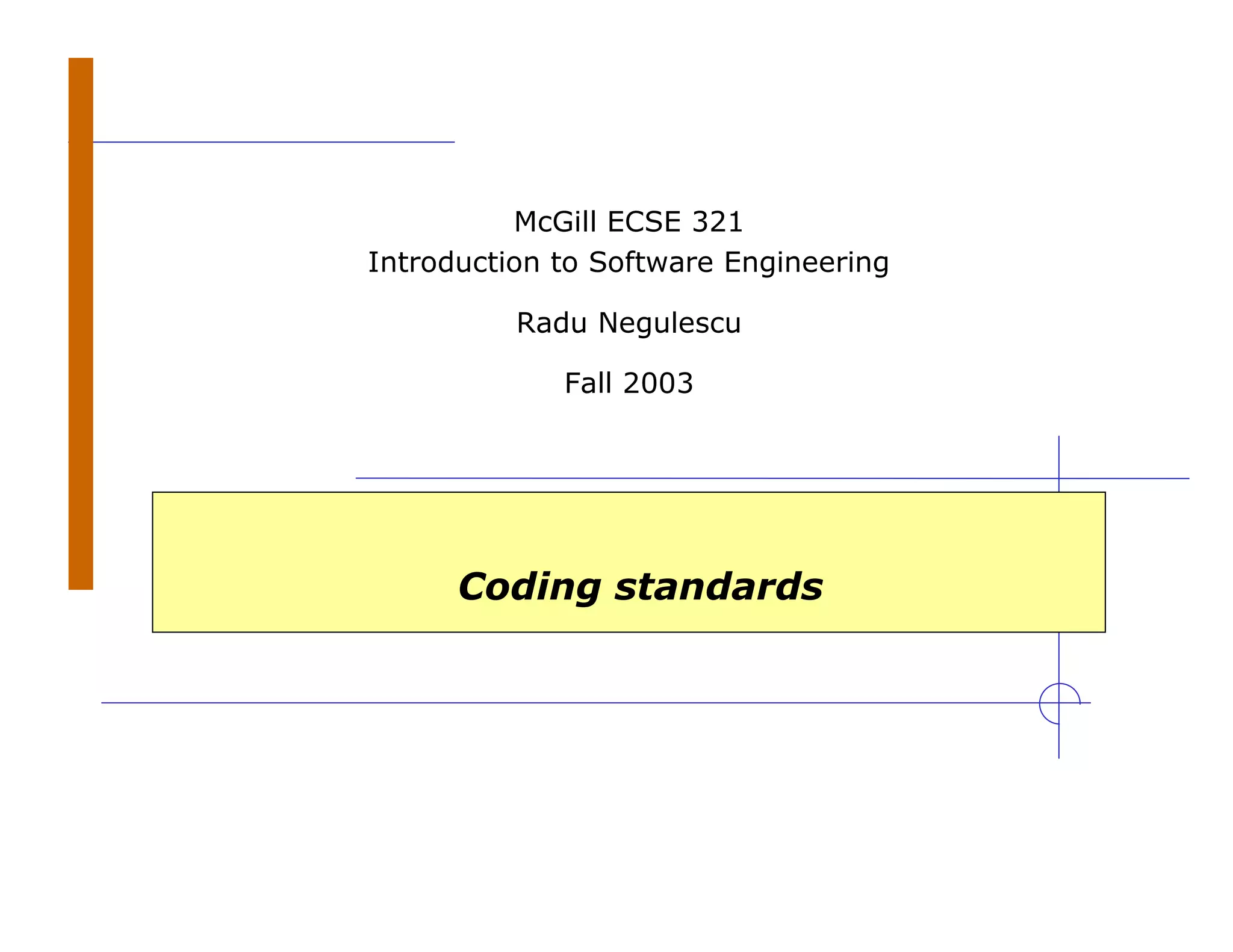
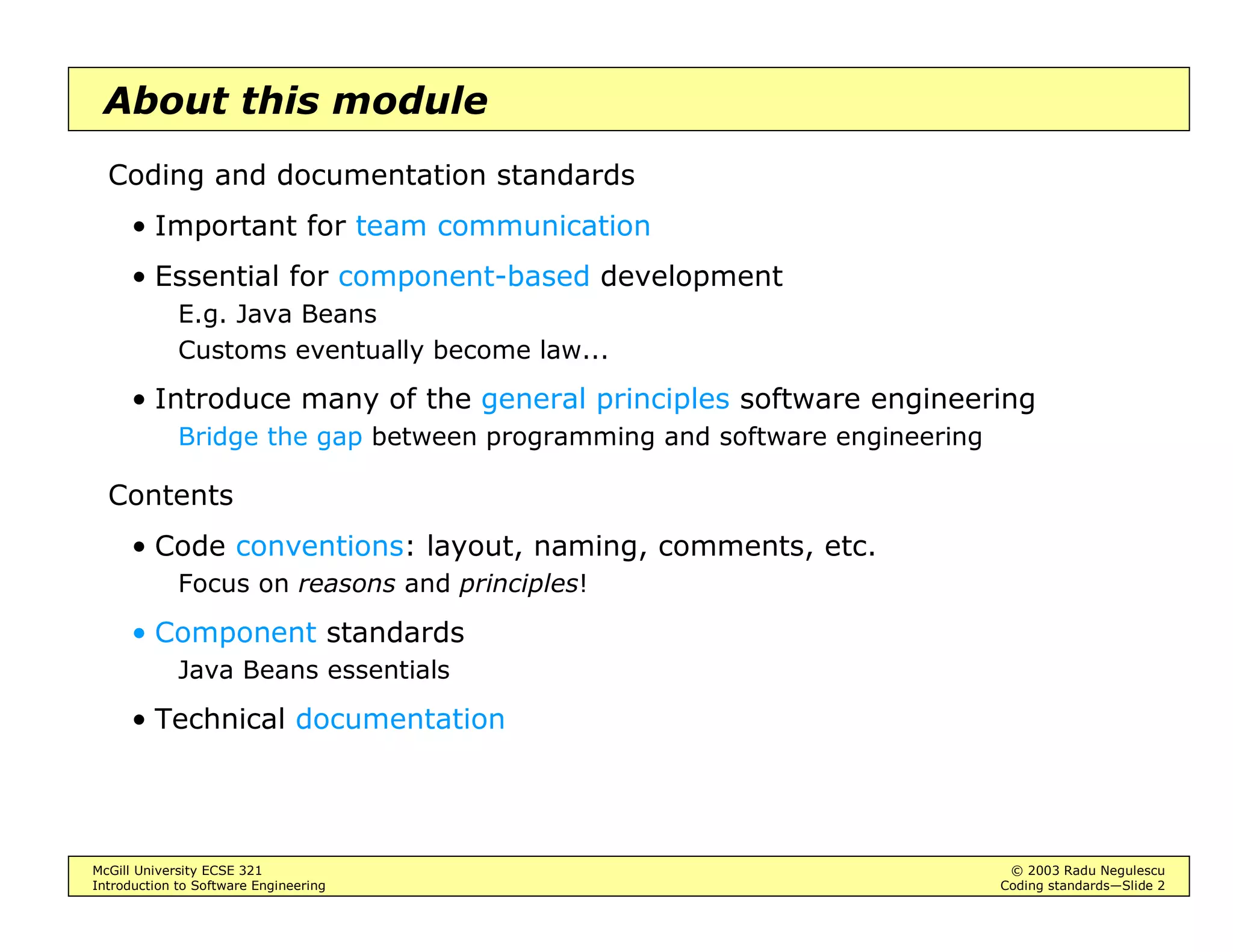
![McGill University ECSE 321 © 2003 Radu Negulescu
Introduction to Software Engineering Coding standards—Slide 3
Why use code conventions?
Danger! Religious wars!
• Some programmers would rather quit than put a curly bracket in a
different place. Then, why bother them with coding conventions?
• Not for aesthetics!
• Team integration
Needs of code readers (reviewers and maintainers) are at least as important
as the needs of the code writers!
Developers, testers often communicate by code
No such thing as “best conventions”
More important to follow some consistent conventions
Focus on reasons behind, link to organizational objectives
• Source code may need to be released with the product
• Part of certain development processes
“If you are going to have all these programmers (…) refactoring each other’s
code constantly, you simply cannot afford to have different sets of coding
practices.” [Kent Beck, “Extreme Programming Explained”]](https://image.slidesharecdn.com/codingstandardsmcgillecse321f0320030909-130818194741-phpapp01/75/Intro-to-Software-Engineering-Coding-Standards-3-2048.jpg)
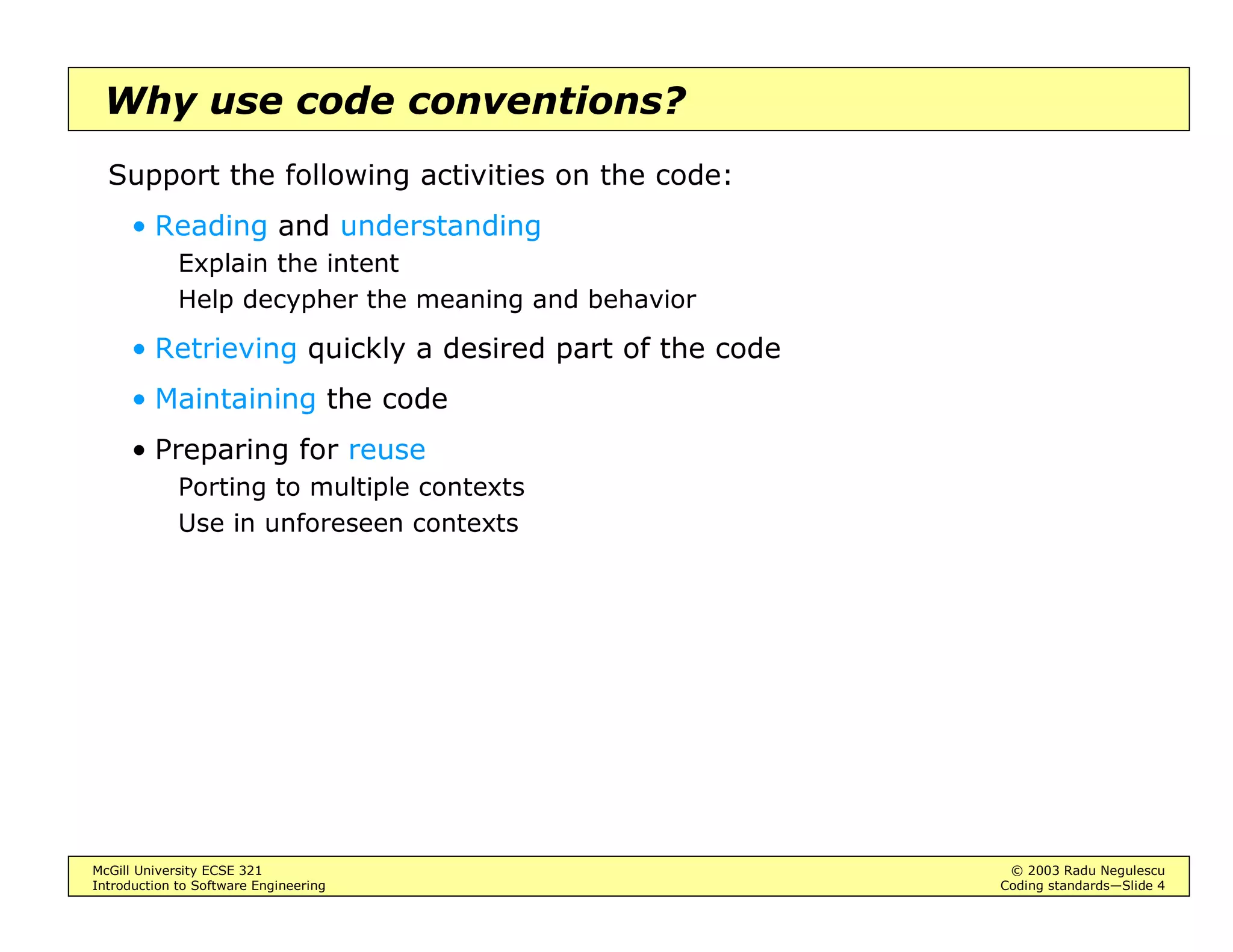
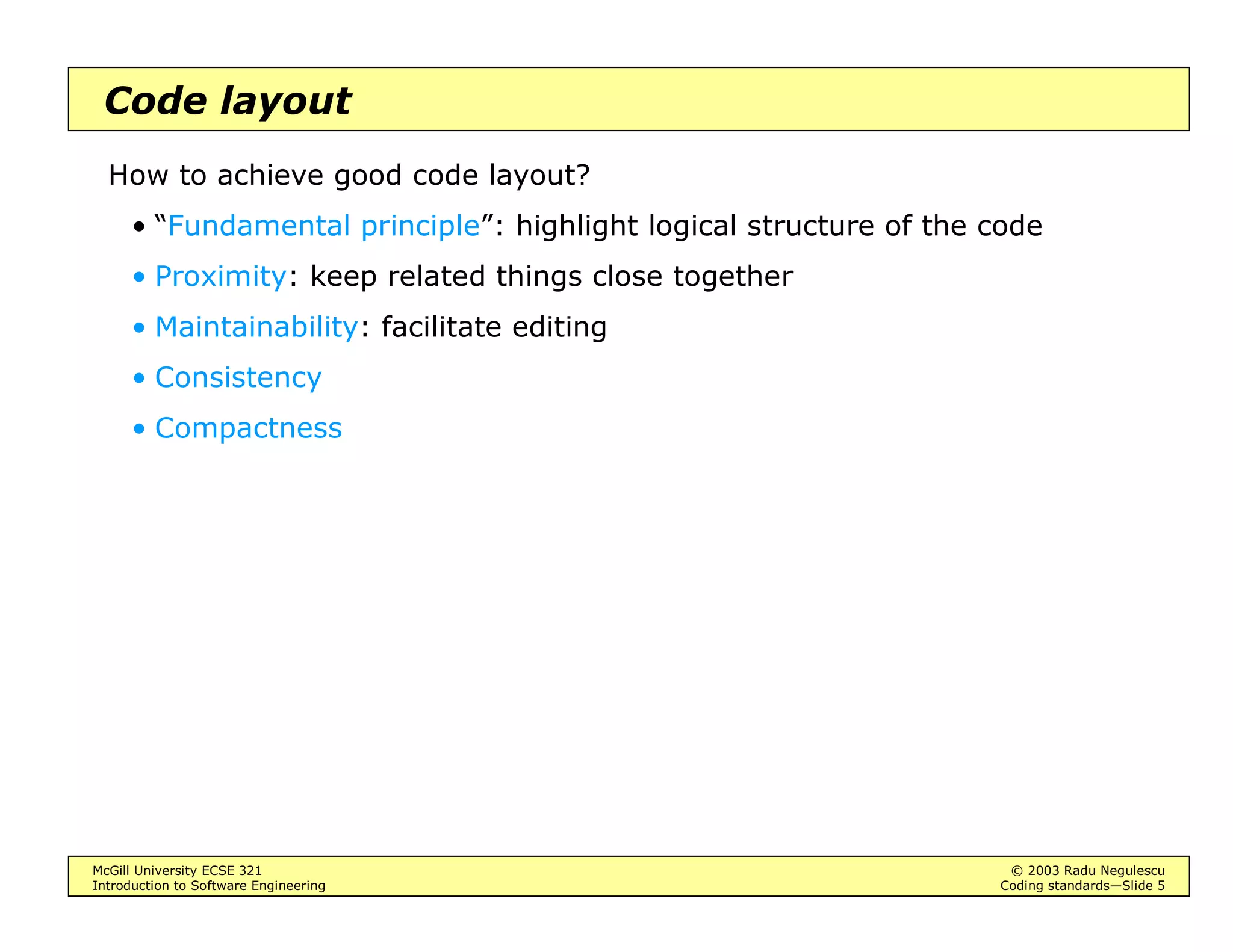
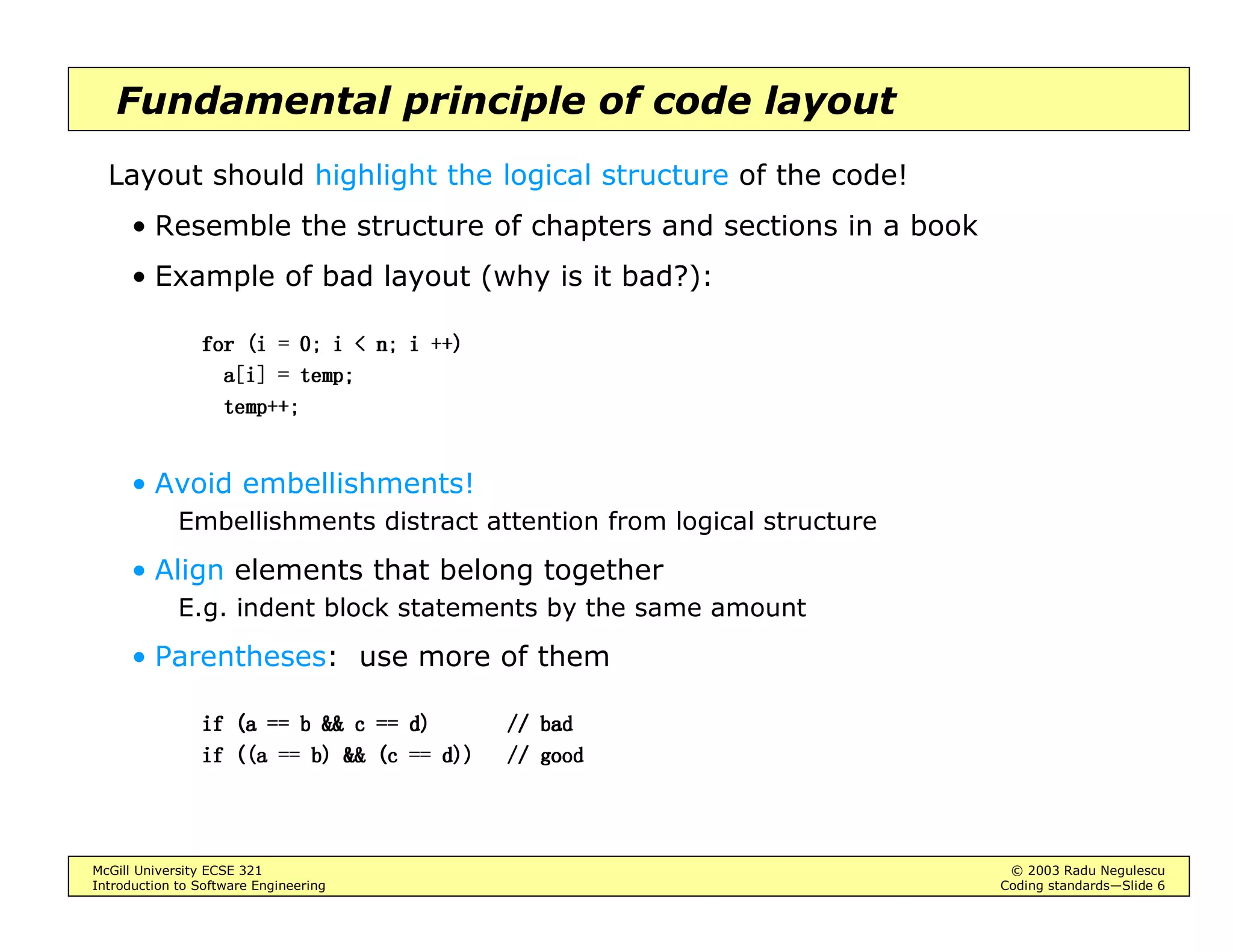
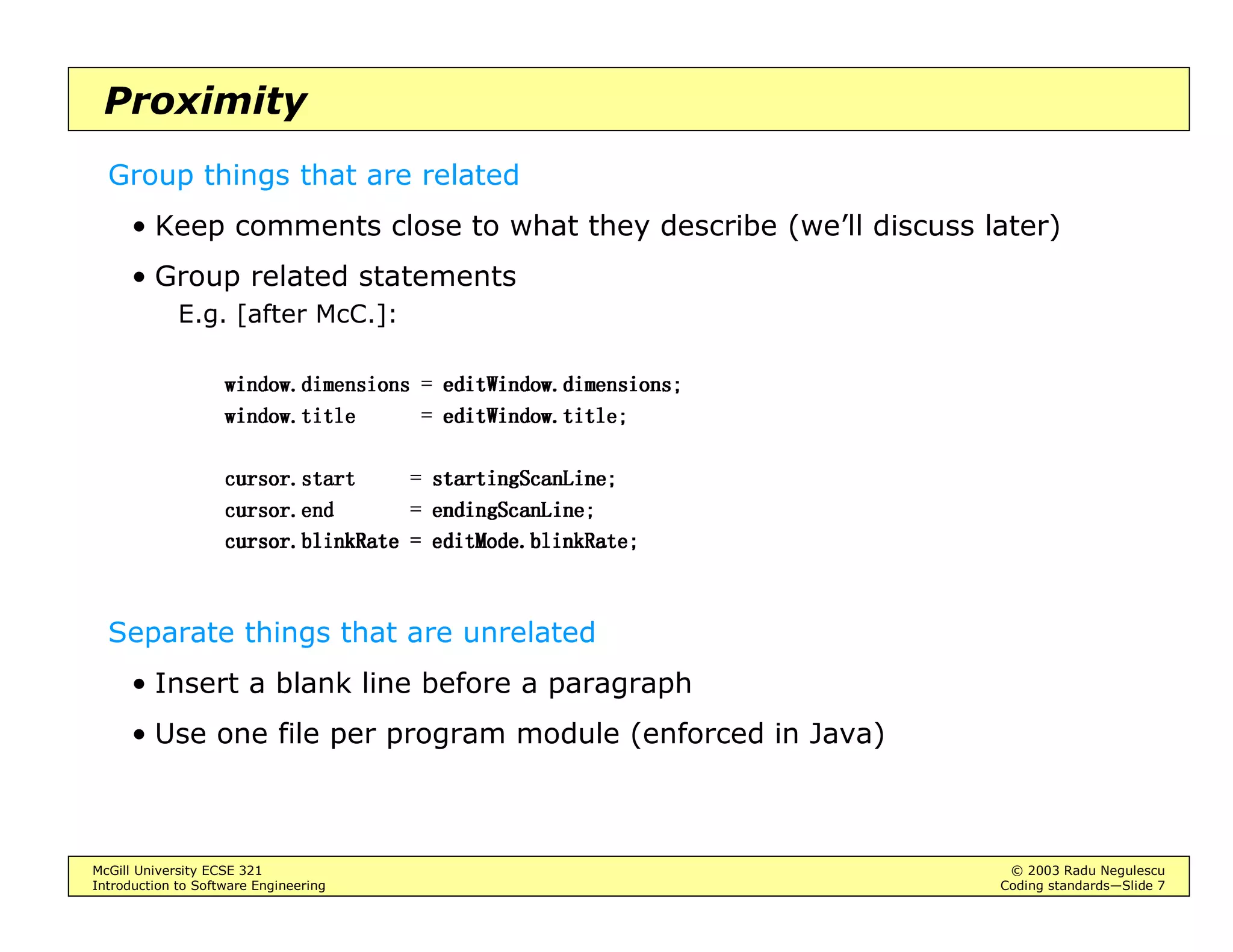

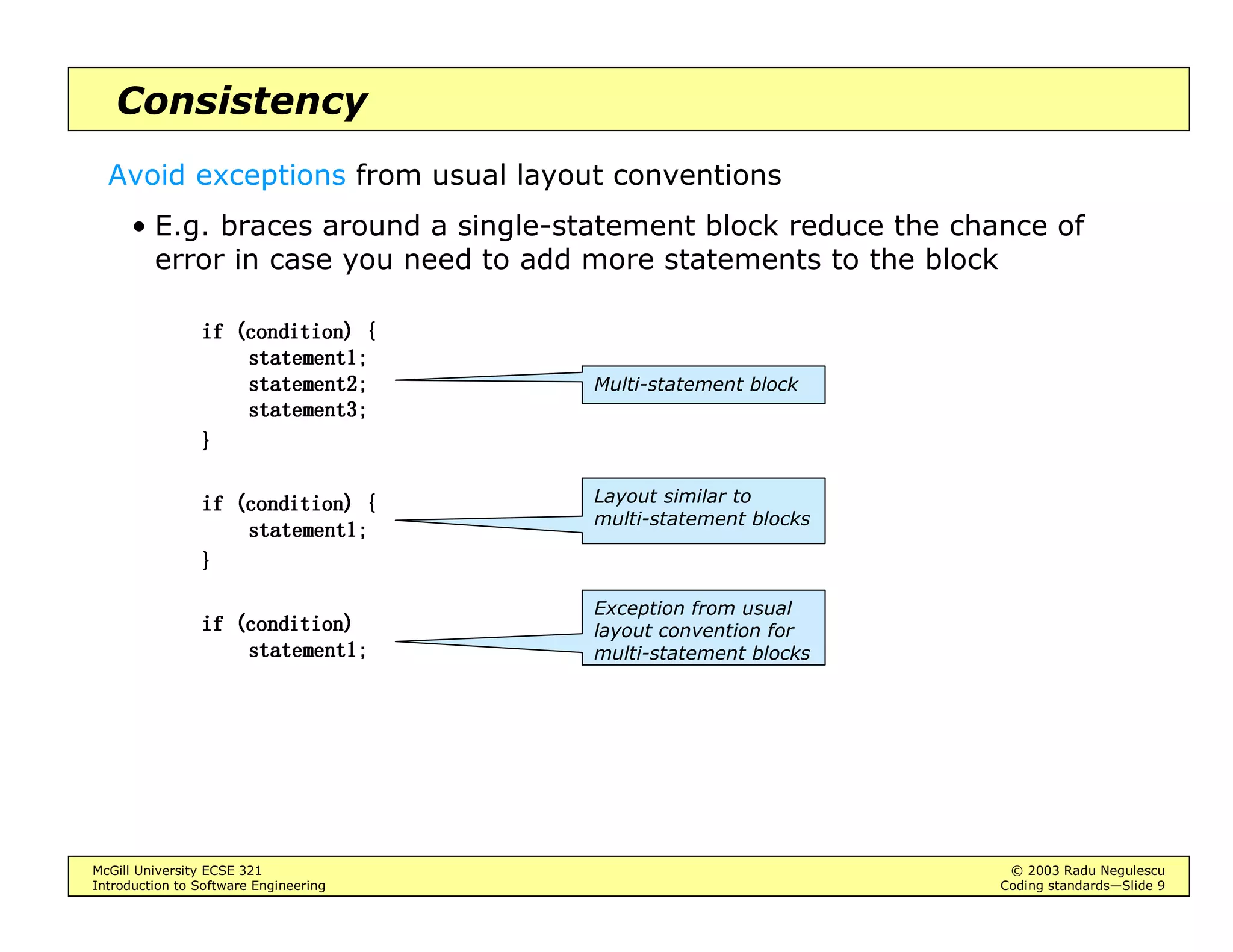
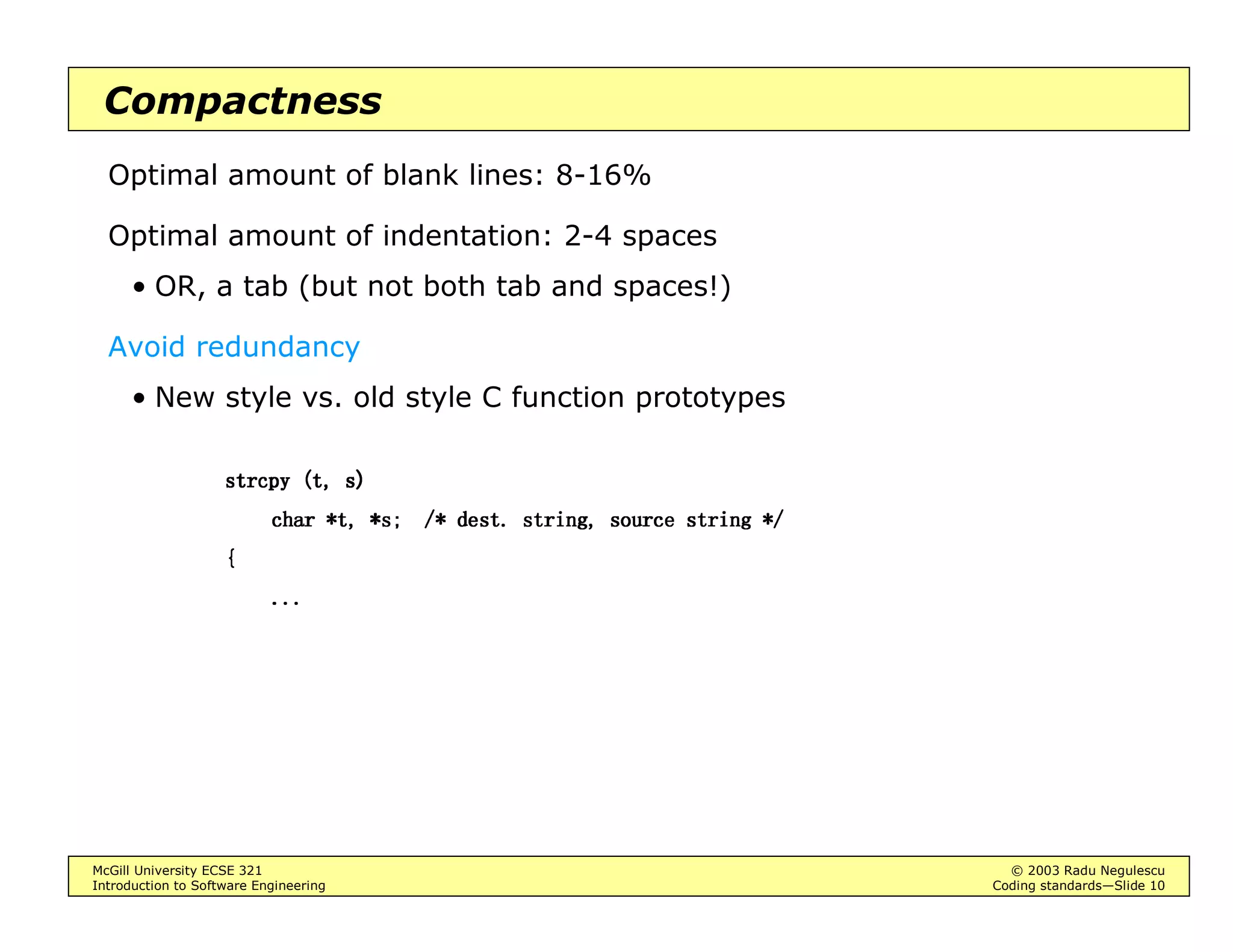
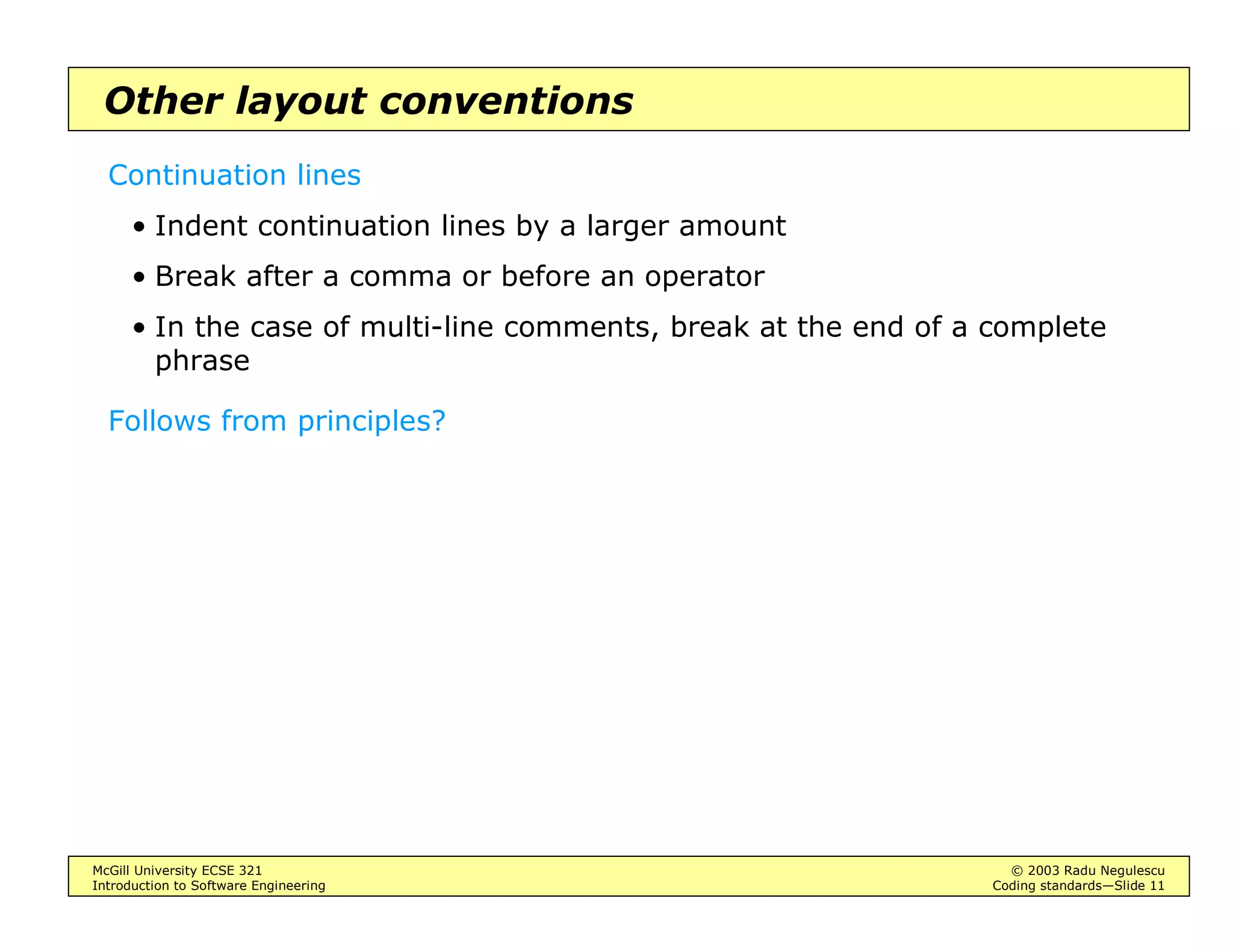
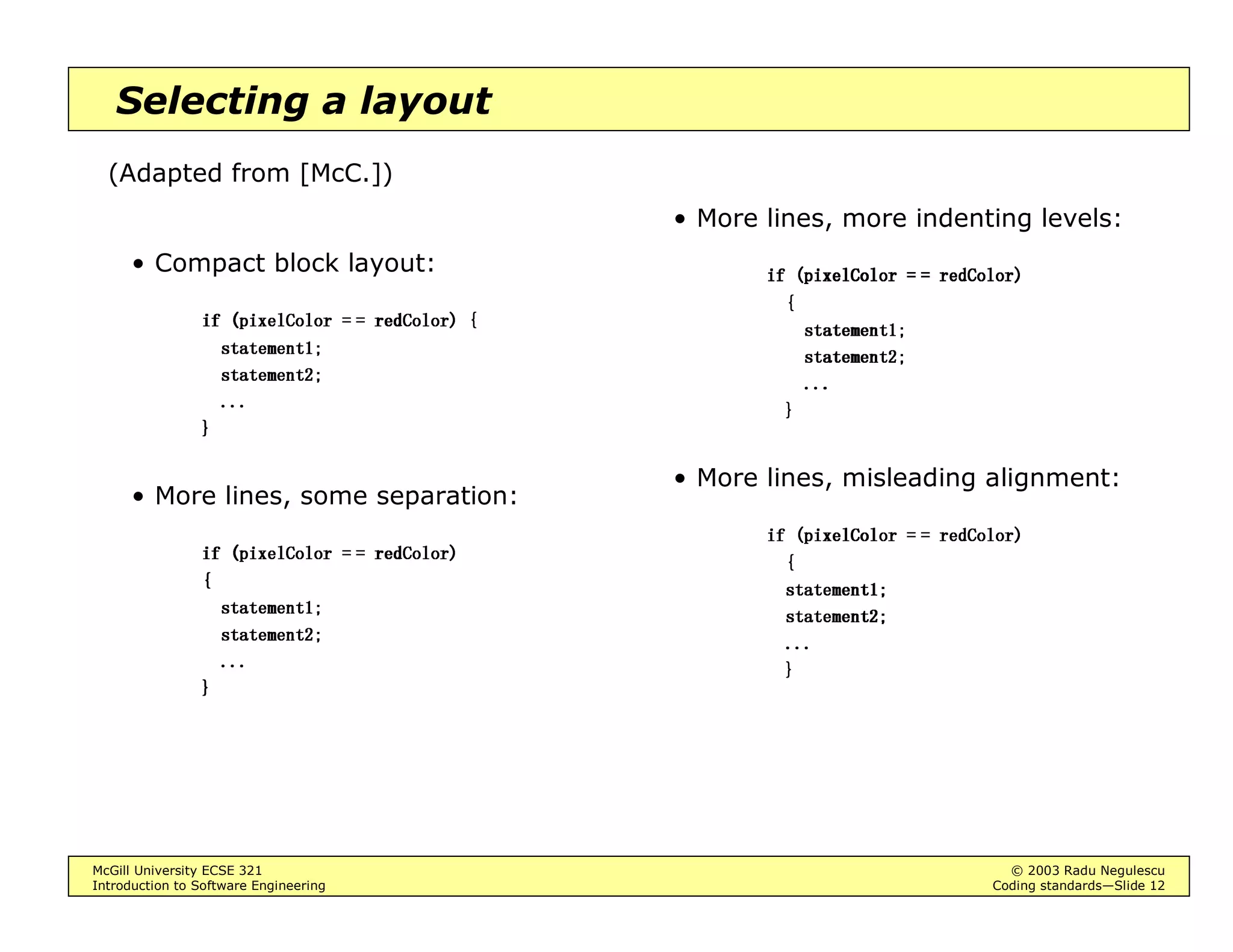
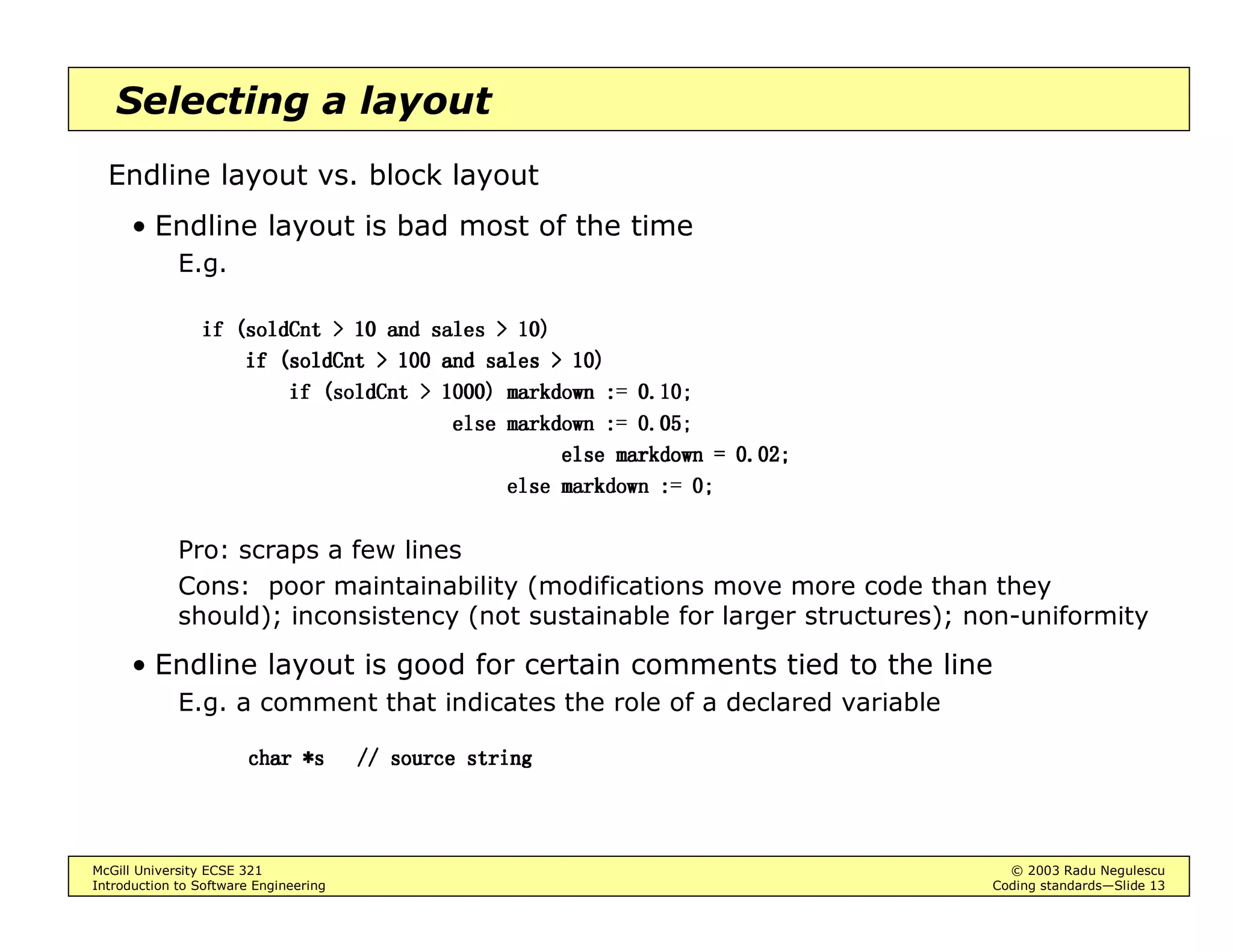
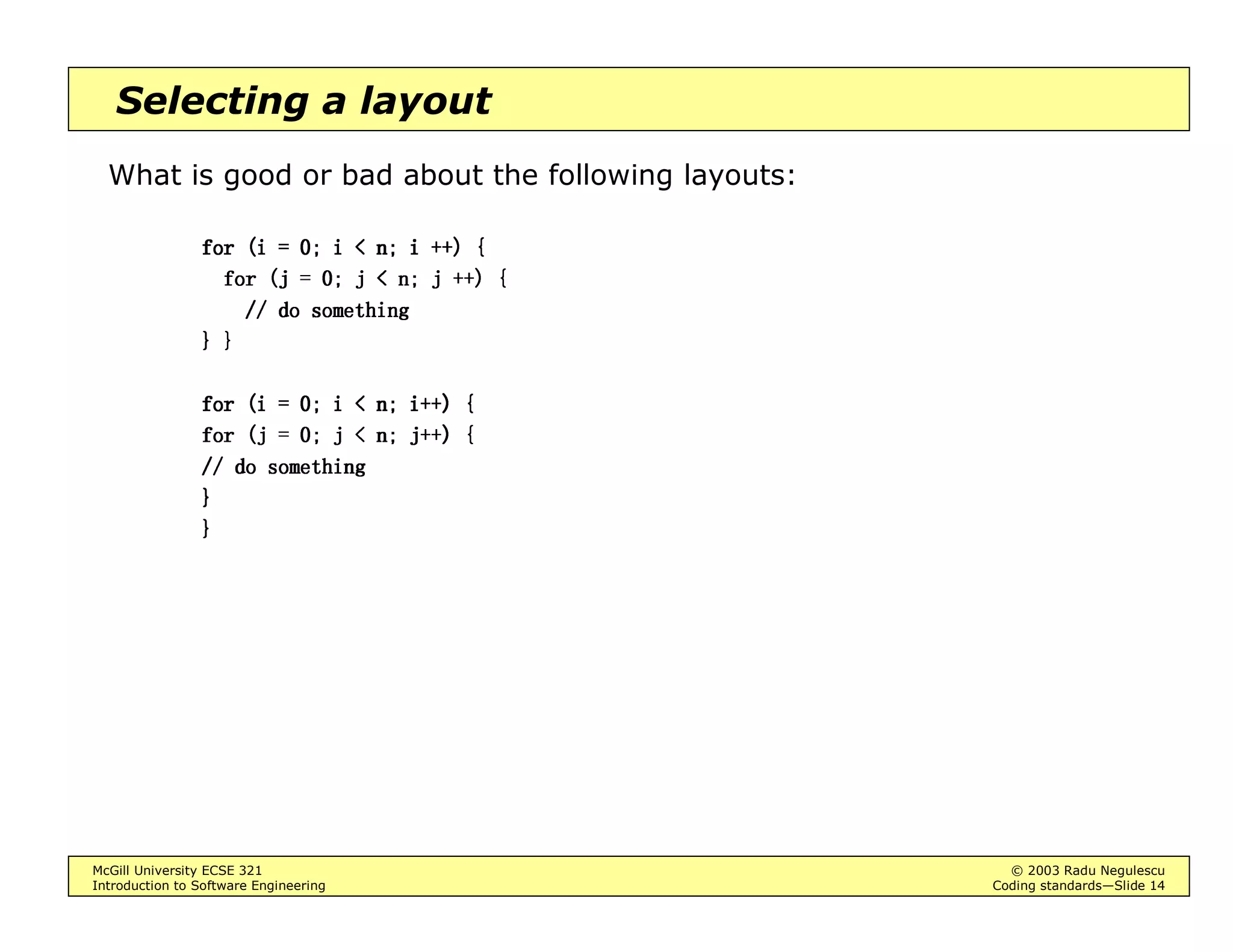
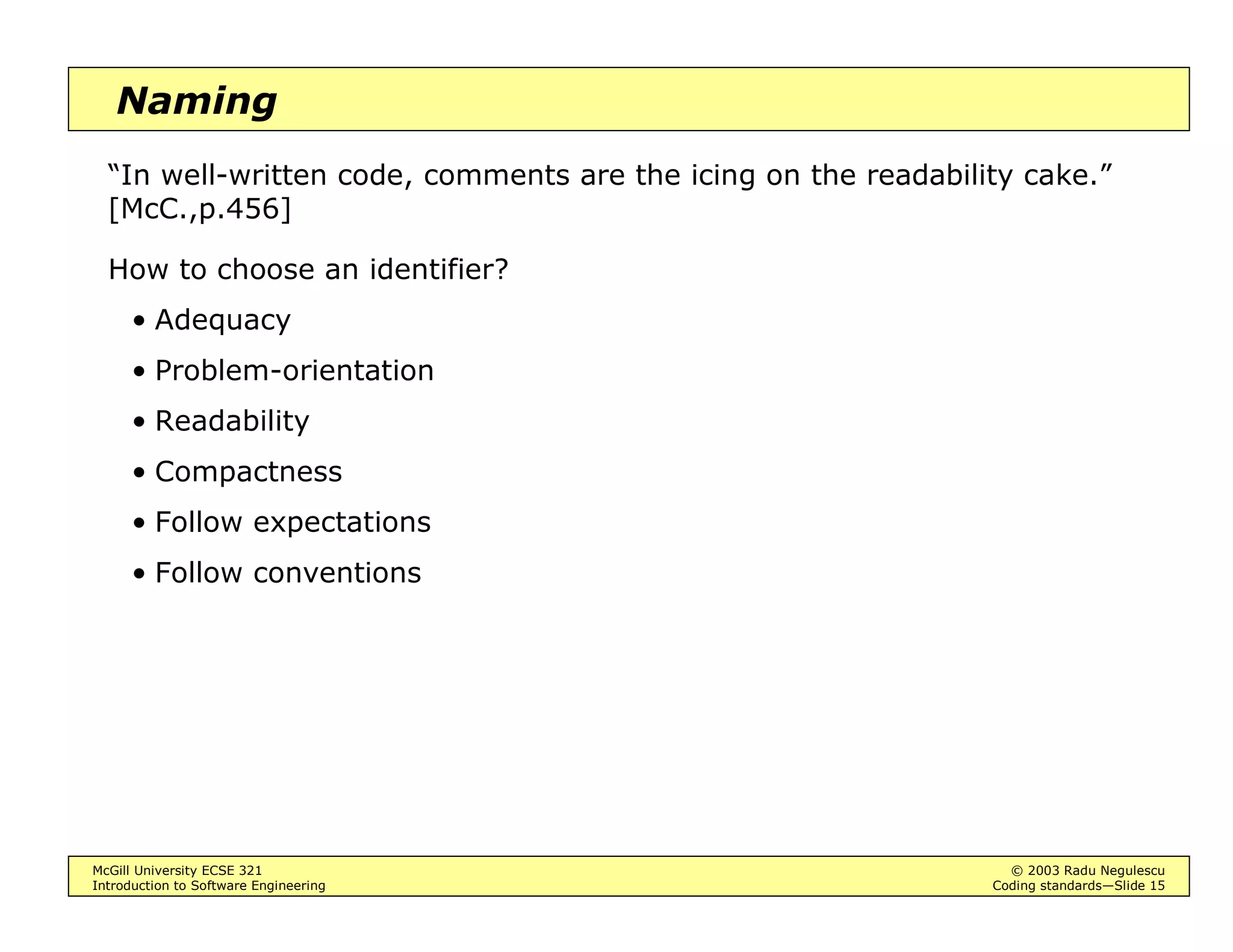
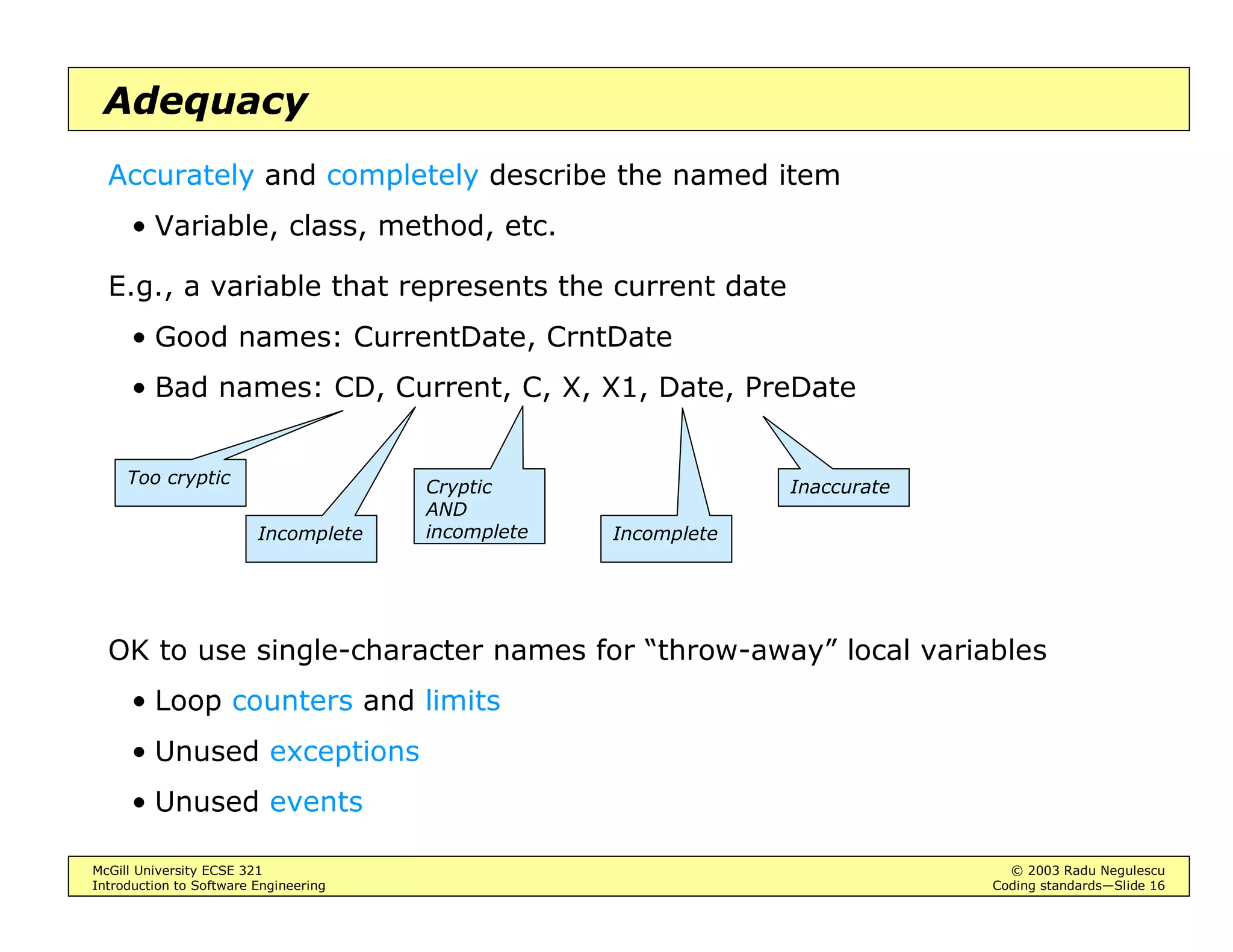
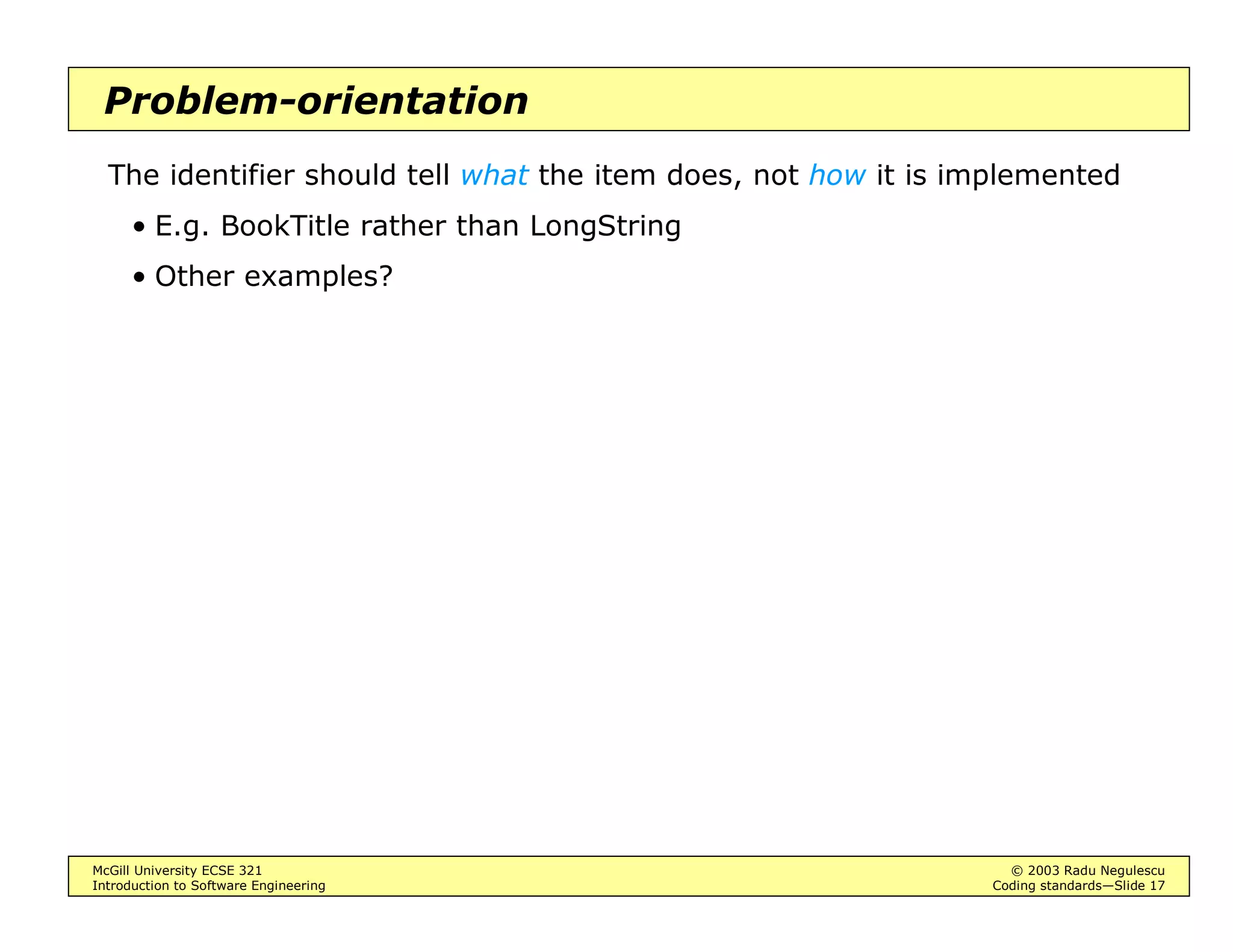

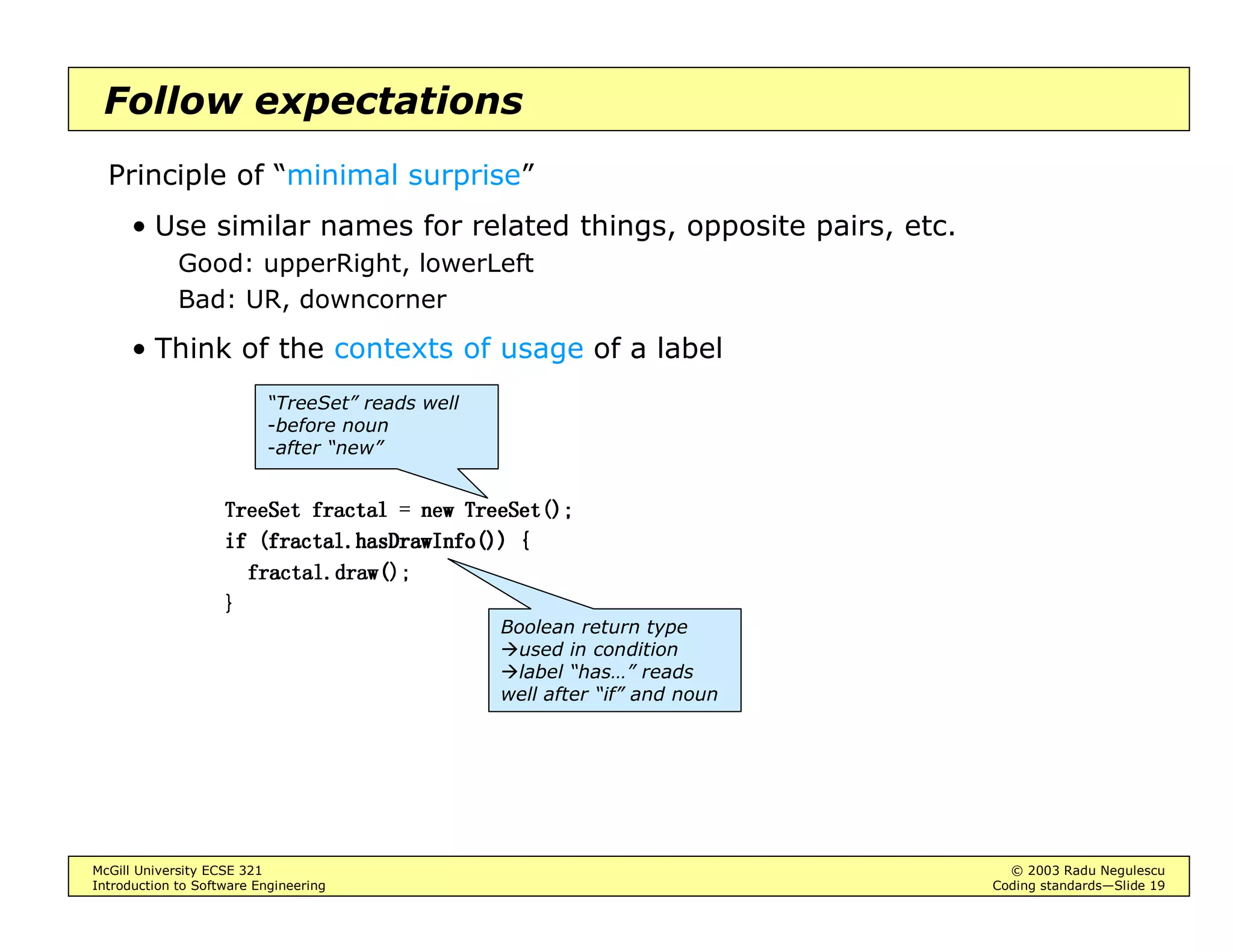
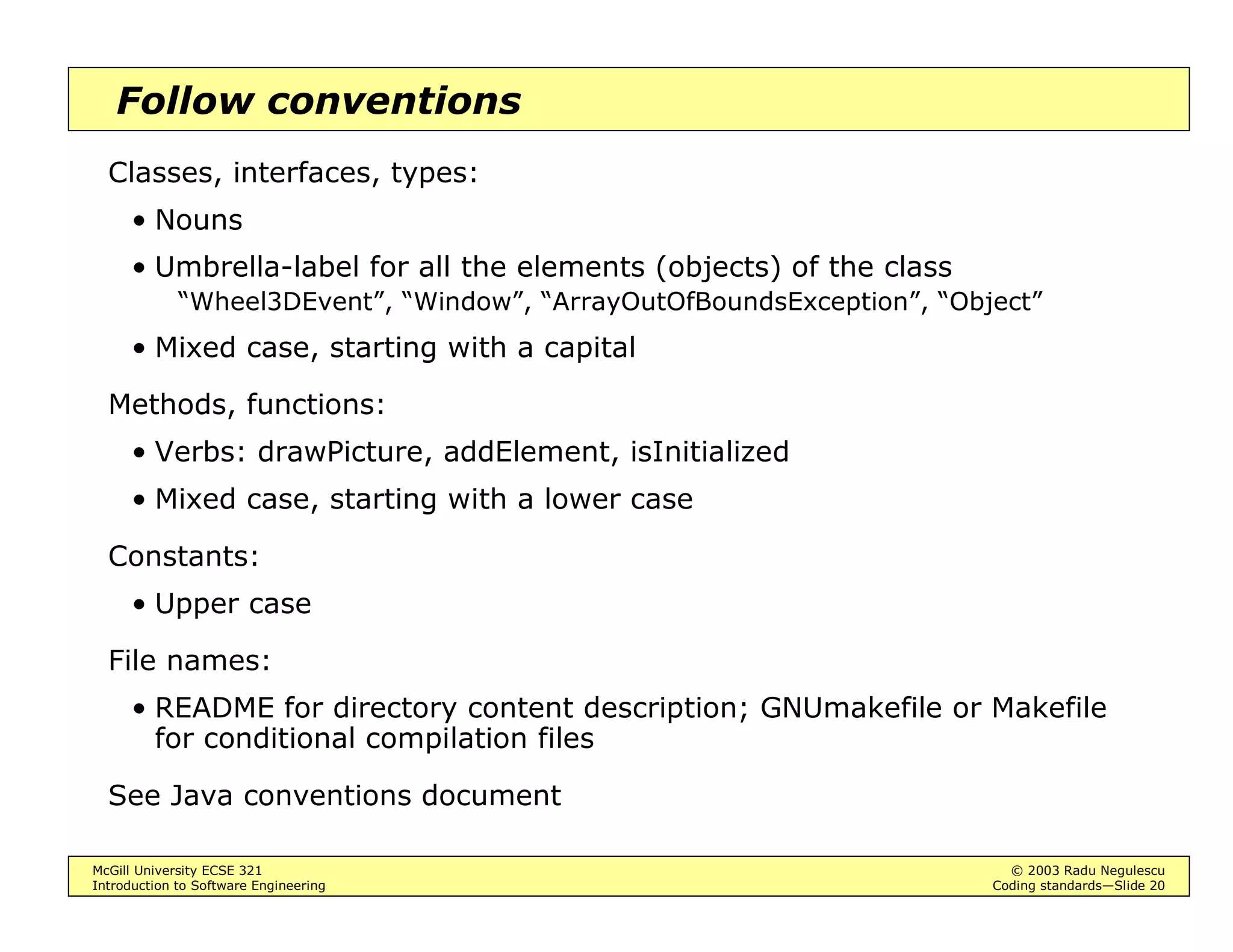
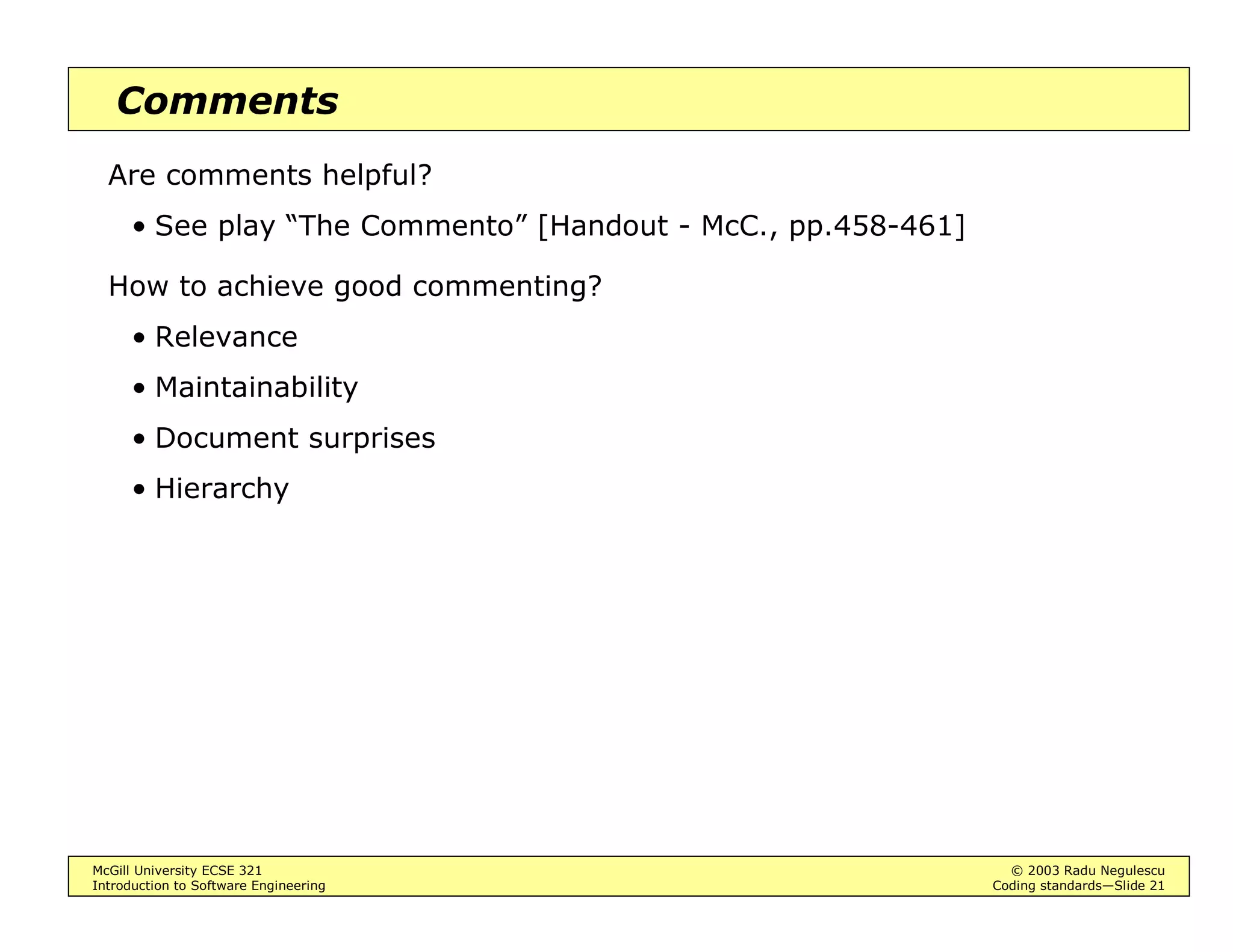

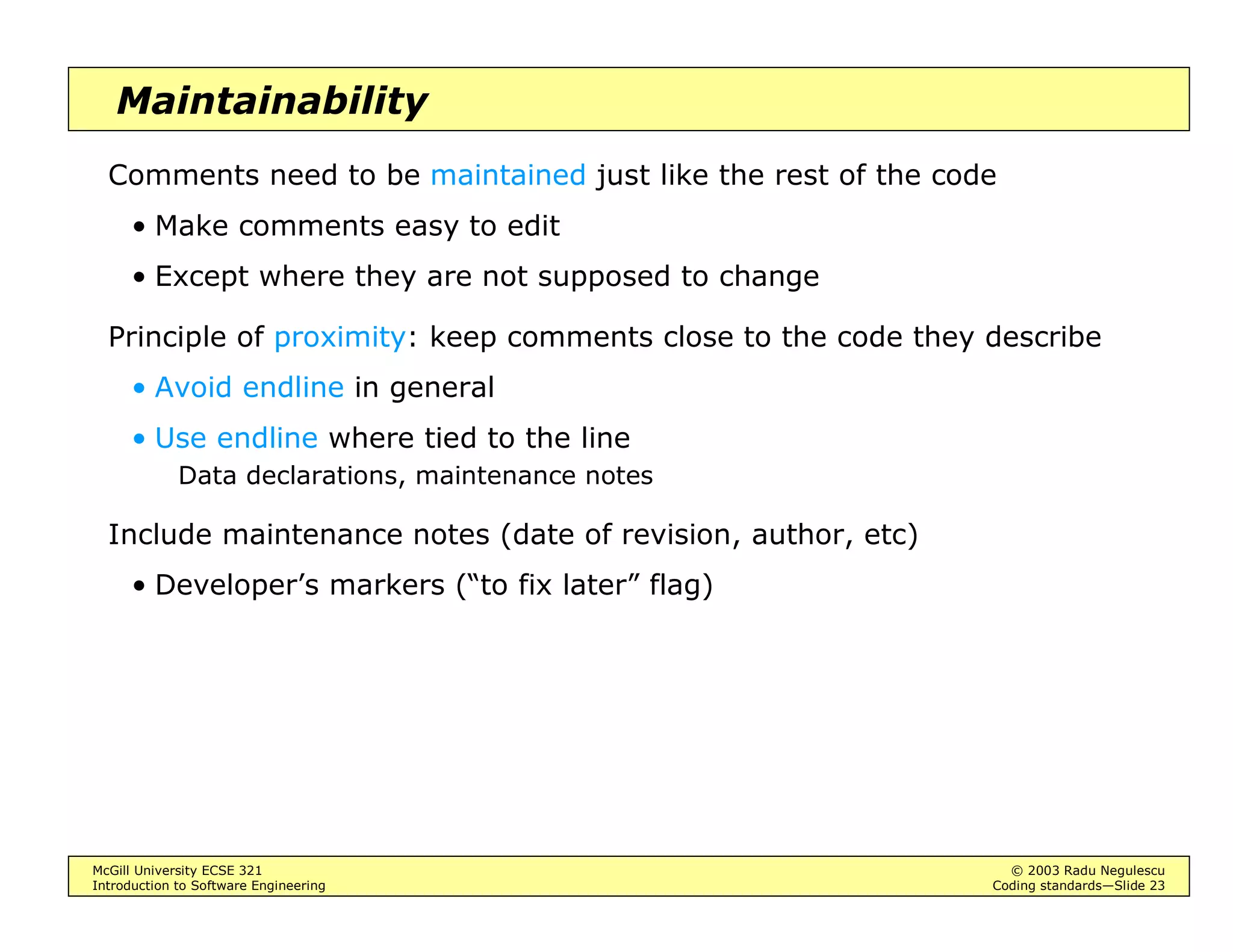
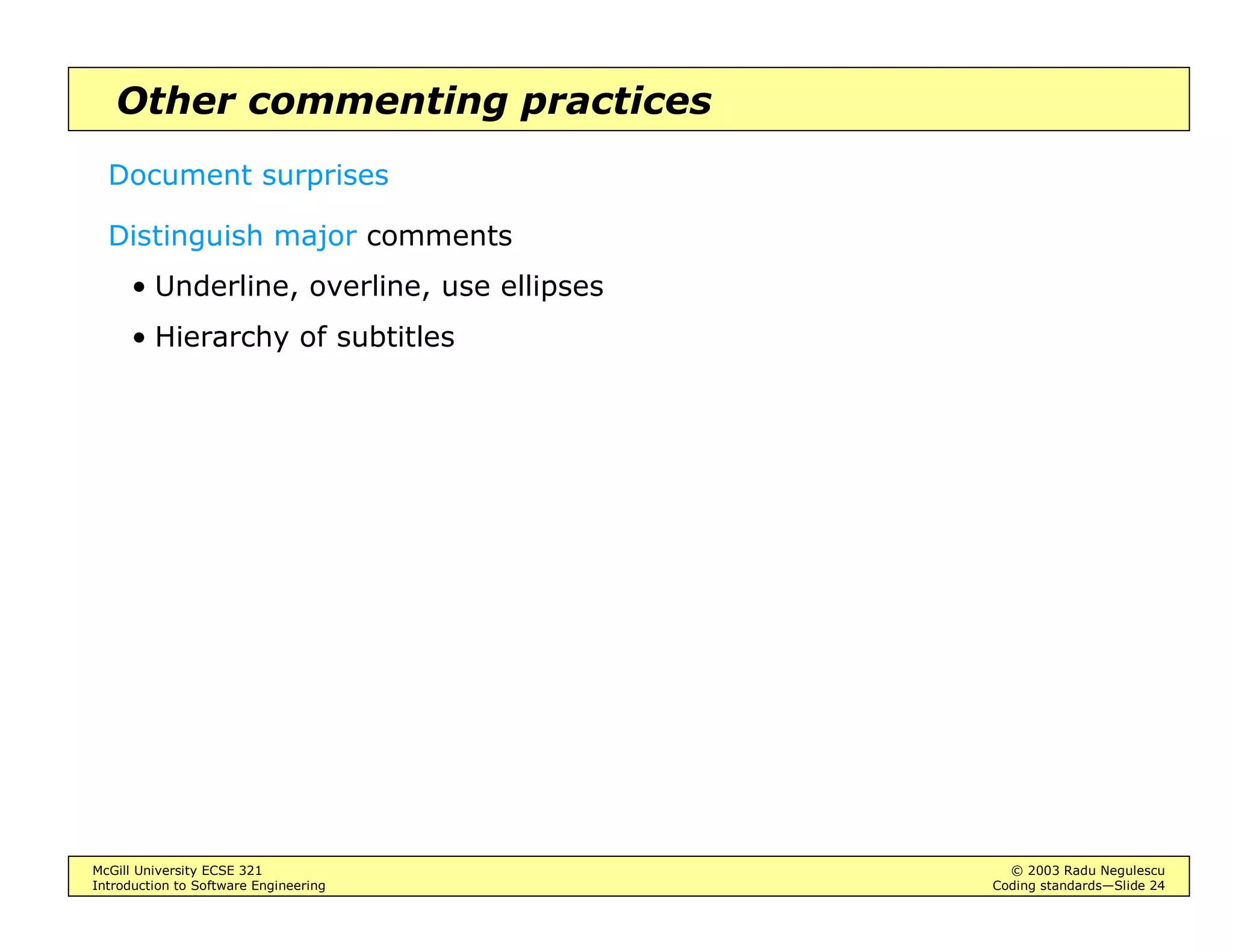
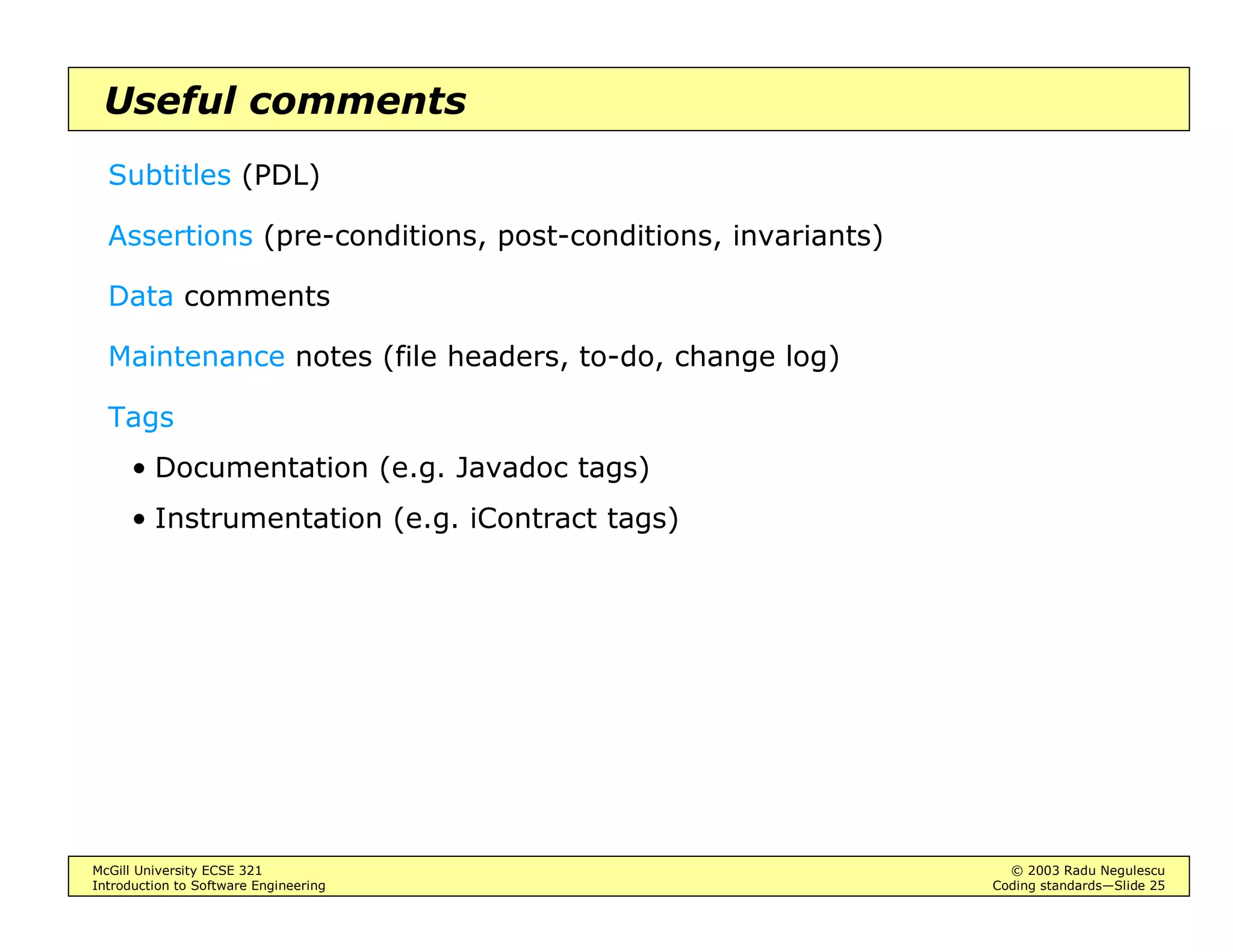
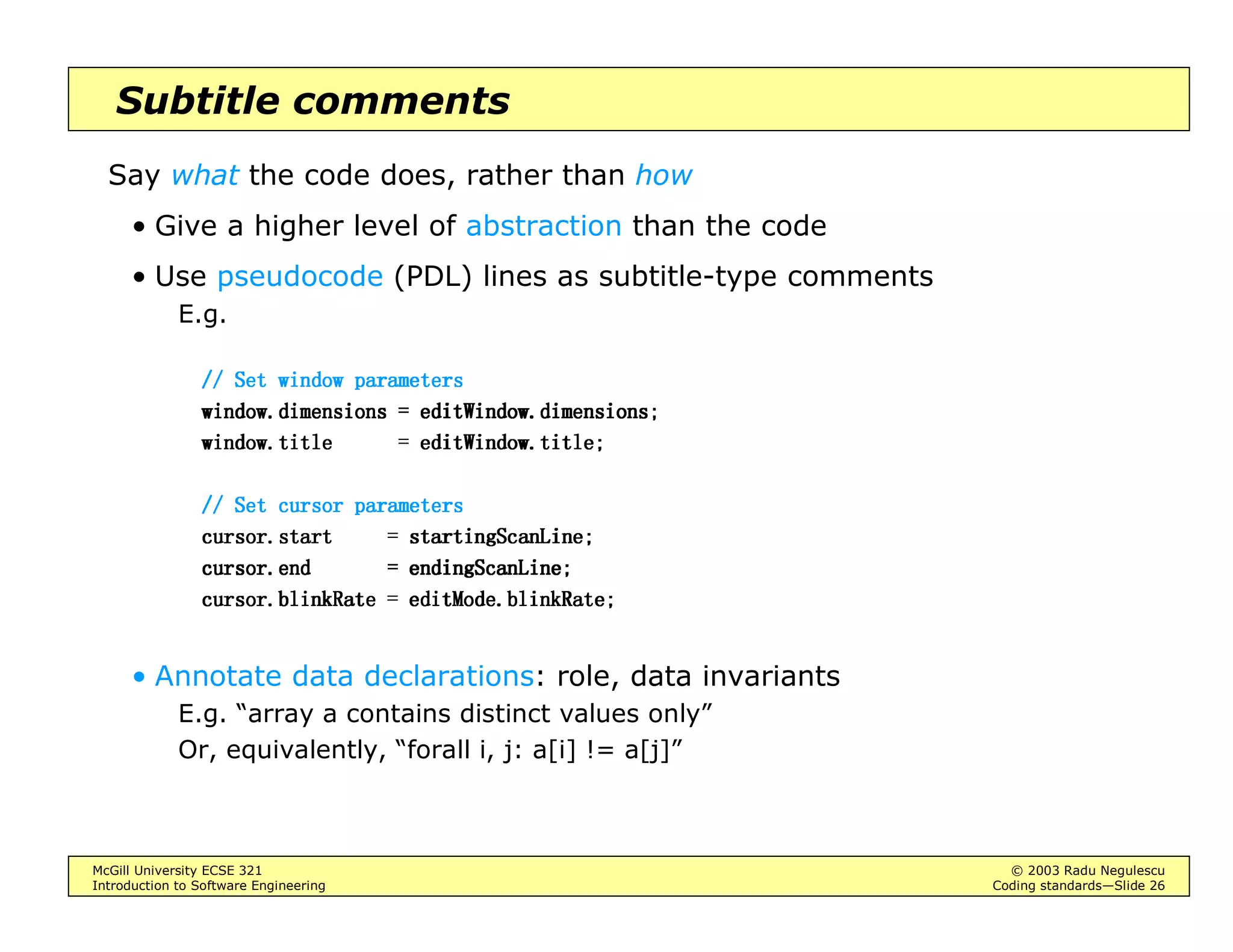
![McGill University ECSE 321 © 2003 Radu Negulescu
Introduction to Software Engineering Coding standards—Slide 7
Proximity
Group things that are related
• Keep comments close to what they describe (we’ll discuss later)
• Group related statements
E.g. [after McC.]:
ZLQGRZGLPHQVLRQVZLQGRZGLPHQVLRQVZLQGRZGLPHQVLRQVZLQGRZGLPHQVLRQV HGLW:LQGRZHGLW:LQGRZHGLW:LQGRZHGLW:LQGRZGLPHQVLRQVGLPHQVLRQVGLPHQVLRQVGLPHQVLRQV
ZLQGRZWLWOHZLQGRZWLWOHZLQGRZWLWOHZLQGRZWLWOH HGLW:LQGRZHGLW:LQGRZHGLW:LQGRZHGLW:LQGRZWLWOHWLWOHWLWOHWLWOH
FXUVRUVWDUWFXUVRUVWDUWFXUVRUVWDUWFXUVRUVWDUW VWDUWLQJ6FDQ/LQHVWDUWLQJ6FDQ/LQHVWDUWLQJ6FDQ/LQHVWDUWLQJ6FDQ/LQH
FXUVRUHQGFXUVRUHQGFXUVRUHQGFXUVRUHQG HQGLQJ6FDQ/LQHHQGLQJ6FDQ/LQHHQGLQJ6FDQ/LQHHQGLQJ6FDQ/LQH
FXUVRUFXUVRUFXUVRUFXUVRUEOLQN5DWHEOLQN5DWHEOLQN5DWHEOLQN5DWH HGLW0RGHHGLW0RGHHGLW0RGHHGLW0RGHEOLQN5DWHEOLQN5DWHEOLQN5DWHEOLQN5DWH
Separate things that are unrelated
• Insert a blank line before a paragraph
• Use one file per program module (enforced in Java)](https://image.slidesharecdn.com/codingstandardsmcgillecse321f0320030909-130818194741-phpapp01/75/Intro-to-Software-Engineering-Coding-Standards-27-2048.jpg)
